
avfoil news WWW.AVFOIL.COM VOLUME 01 CHRONICLES OUR MOST VIEWED STORIES OF 2023 FEB 2024 Helicopter - Fixed Wing - Future of Flight - UAS/UAV - Sustainability ISSUE #001

ABOUT THE COVER:
We do aviation news differently, so naturally, we wanted to try something different for our print magazine. We put keywords from the stories over the last year into MidJourney to see what AI thought the future of aviation and society might like. Then we added a dash of specificity from our talented design team and voila... We don't know what the future holds but the news of today and tomorrow form the chronicles of our journey.
TOP FUTURE FLIGHT STORIES 22 TOP FIXED WING STORIES 14 TOP SUSTAINABLITY STORIES 38 TOP UAS / UAV STORIES 30
2 avfoil news - issue 001 WWW.AVFOIL.COM Contents PUBLISHER'S VISION 2 EDITOR'S NOTE 3 TOP HELICOPTER STORIES 6
PUBLISHER
Sacha Wetzel
EDITOR IN CHIEF
Jason Jorgensen
DESIGN LEAD
Gustavo Bello
RESEARCH LEAD
Bhaskar Bhuyan
Publisher’s Vision
In a perfect world, news services would know our personal preferences, our likes and dislikes, and then tailor all of the information being presented to us based on those preferences…
In many ways, this is the news we receive on most of our modern platforms right now.
We are sent information based on the results of an algorithm centered around our individual and collective consumption habits.
This should mean that we are more likely to receive the information that is most important to us, and we should have a higher likelihood of enjoying and engaging with that information. But that's not always the story.
Frequently, these algorithms are used to present us with advertisements, but when applied to the news, they are also used to coerce us towards or away from topics or subjects.
This approach is actually quite counterproductive to keeping
ourselves and others informed and educated about what is occurring in our aviation industry.
Avfoil strives to do things differently by offering support to all of the news agencies and individuals providing aviationbased content and reporting to the broader community of flight.
I fondly recall, as a kid, talking with my grandfather about his time in the Air Force and going to air shows with him whenever I could. I know what it means to be interested in aerospace/ flight/aviation, even to a level approaching religion.
Since that time, I have always gravitated toward those people, places, activities, and stories that had anything to do with flight... we endeavor to deliver the same with our Avfoil News.
Have a safe flight, let the aircraft that you have bolted together stay airborne, and may the reports you write stay true.
Good luck and godspeed!
- Sacha
3 Feb 2024 - avfoil news
Editor's Note
Welcome to Avfoil News Chronicles.
As a child, I remember being taught in school how to navigate a newspaper, what each section meant, how stories were written, and even how to read the articles to understand and evaluate the information being given.
Into adulthood, I read many things, front page to back page, even on topics I wasn’t that interested in, simply because it was the next article…
I don’t recall the last time I did that in a typical day. Sometime between dialing into AOL and getting my first iPhone no doubt.
Today, we are inundated with so much information that most people give only a cursory glance and move on to the next bit. We rely on others, even computers to break down information and feed it to us in tiny bite-sized chunks.
There is an interesting shift occurring in the media space, as producers of content meant for mass consumption are losing ground to a growing movement of independent journalism.
This shift is more important in our everyday lives than we realize, especially to those of us in a tight-knit industry like aviation.
At Avfoil, we are passionate about aviation and view aviation holistically. All aerospace topics have greater relevance to one another than the segments of the industry like to admit.
Avfoil News strives to provide a distribution conduit for all producers of aviation content and give support to all who have a passion to tell the tale of aviation.
As we move through our increasingly connected future, local and global topics will affect all of us in the aviation space with greater impact and speed than ever before.
Content creators large and small will play greater roles in keeping the industry informed by telling the stories they are each uniquely suited to tell.
All of those stories matter in the greater “story of flight,” and we are eager to see where those stories take "flight." - Jason
4 avfoil news - issue 001 AVFOIL NEWS CHRONICLES
monthly
AVFOIL LIMITED 8 Mustang Lane, Wanaka Airport, Wanaka 9382, Otago, New Zealand news@avfoil.com • avfoil.com Publisher: Sacha Wetzel - sacha@avfoil.com EDITOR IN CHIEF: Jason Jorgensen - jason@avfoil.com © Copyright 2024 AVFOIL NEWS CHRONICLES retains all rights for reproduction of any material submitted, to include but not limited to articles, photographs, emails and bulletin board posts. All material remains the copyright of AVFOIL NEWS CHRONICLES. No part of this publication may be reproduced, in part or whole, without the written consent of the publisher. Published content does not necessary reflect the views of the publisher. Content within AVFOIL NEWS CHRONICLES is believed to be true and accurate and the publisher does not assume responsibility for any errors or omissions. Unsolicited editorial manuscripts and photos are welcomed and encouraged. We cannot be responsible for return unless submissions are accompanied by a stamped, selfaddressed envelope. Advertising deadline is 12 noon, on the 1st of the month preceding the month of publication.
is published
by:















“Work
CEP Blu Link II Longest shell life in the industry Custom Paint and Hydrodipping BOSE A20/A30 ANR/Blutooth DOI Certified MACH 1/LH050 MACH 2/LH250 Fidlock Chinstrap Lightest Weight Experts in custom fit for maximum comfort meritapparel.com (904) 770-7154
with the BEST, your head deserves nothing less” SCAN ME
Most Viewed Helicopter Stories 2023
160th Special Operations Aviation
Regiment unveils rotary-wing advanced tactical helmet
Source: Branding Iron Press Release
The 160th Special Operations Aviation Regiment (Abn) is procuring a new flight helmet after more than several decades of service with the HGU-56P and SPH-4B helmets. Air missions have become increasingly complex with the need for improved situational awareness in multi-threat environments requiring integration of sophisticated identification, tracking, and targeting technology. USSOCOM and the 160th SOAR (Abn) are being utilized by the Army and greater DoD entities more than ever before while being asked to do so with head borne equipment dating back to the Vietnam era. The need to upgrade head borne equipment for future generations of vertical lift personnel has become critically important.
Decreasing head borne weight is one of the most important challenges facing aircrew missions today. Head borne weight not only causes fatigue and is a detriment to aircrew performance but is also responsible for longterm neck injuries and permanent disabilities, shortening the careers of aviators. A February 2019 report to the Armed Services Committees of the Senate and House of Representatives
“Study on Health of Helicopter and Tiltrotor Pilots” states,
“Knox, et al. (2018) analyzed the U.S. Defense Medical Epidemiology Database (DMED) for cases of lumbar disc herniation among military helicopter pilots from 2006 to 2015 and found
its incidence rate to be significantly higher than that of a control group composed of all U.S. military non-helicopter pilot officers. This effect was particularly strong among Army helicopter pilots, who had an incidence rate almost three times more than that of USN and USMC helicopter pilots” and “A business case analysis sponsored by the Deputy Under Secretary of Defense for Installations and Environment concluded that avoidable costs associated with back and neck pain among DoD helicopter aircrew totaled over $239 million each year, with a significant cost per year in Department of Veterans Affairs payments for flying-related disabilities."
Thanks to the hard work and more than five years coordinated efforts between USAARL, AFRL, SOFWERX, USSOCOM, and the 160th SOAR (Abn), a new helmet system has been developed to address on-going capability gaps with legacy aircrew equipment. The RATH sets a new bar for performance and protection with performance capabilities never before available to the aircrew community.

6 avfoil news - issue 001
Black Hills Life Flight opens new air medical base in South Dakota
Source: Air Methods Press Release
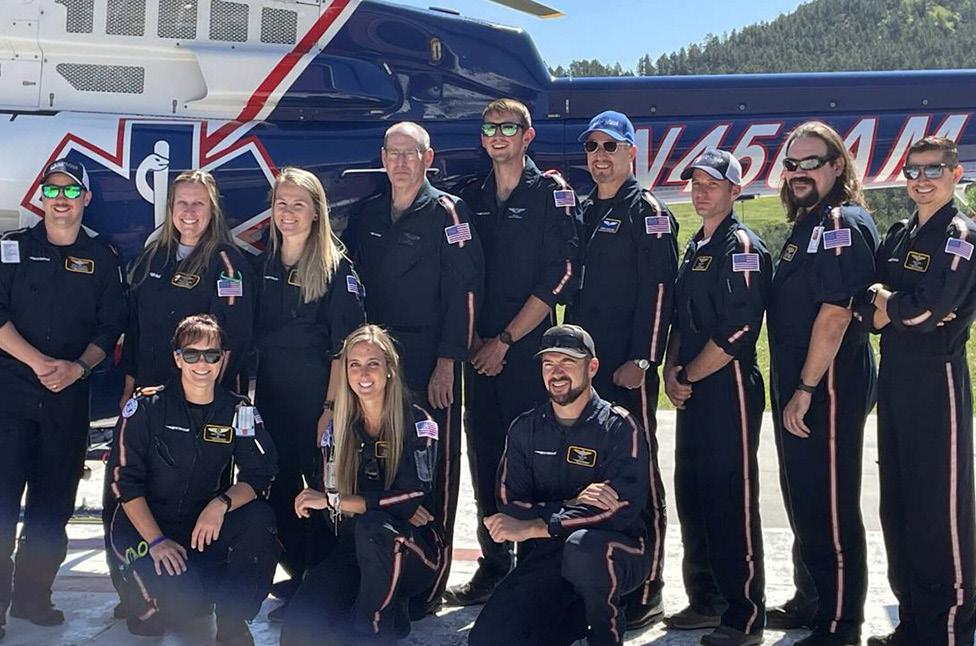
Black Hills Life Flight celebrated the opening of its new base at the Hot Springs Ambulance Service station on June 29, 2023, with South Dakota Secretary of Health Melissa Magstadt, crew members, Air Methods leaders, and nearly 50 guests.
“What you’ve got here is not just a “load to go” shell [meaning simply transportation for the patient],” said Magstadt. “What you have here is an entire ICU. Not only do you have something that gets you from point A to point B very quickly, saving lives, but it is also fully equipped with all of the modern technology and capabilities that modern medicine has to take the ICU and emergency care right to the patient, whether it is on a mountain top or down in the valleys.”
The Hot Springs base, which went into service June 7, joins the Black Hills Life Flight program already established in Rapid City, and is part of Air Methods, a leading air medical provider in the United States.
It provides emergency air medical services to Fall River County and the Black Hills area. Additionally, the opening offers quicker response times for emergent and trauma situations and provides interfacility transports for patients needing specialized care.
The new airbase brings a Bell 407 helicopter, staffed with flight nurses and paramedics and pilots with years of experience in the field, as well as skilled aviation mechanics who ensure the aircraft is safe and mission ready.
“We are committed to serving the people of this region with the best trained crews and safest aircraft in the industry and are honored that Secretary Magstadt came today to support us in this mission,”
said Darryl Crown, account executive with Air Methods.
“We appreciate her commitment to Black Hills Life Flight and to the health of our citizens. Residents of Fall River County and the surrounding area can trust Black Hills Life Flight to provide exceptional emergency care while transporting them safely.”
A unique partnership exists between Black Hills Life Flight and Hot Springs Ambulance Service. While air medical providers and ambulance services typically work closely together, they don’t often work out of the same facility.
“Our service has worked a long time to have this vital resource return to Hot Springs,” said Jacki Conlon, director of operations for Hot Springs Ambulance Service.
“When time is of the essence, critical patients will have a much greater survival rate by having Black Hills Life Flight available, especially in very rural areas where the transport time to a definitive treatment center is much longer.”
One very special guest at the event was Heather Brehmer, a former Black Hills Life Flight clinician whose daughter was transported by the service following a serious car accident.
The teen was thrown from the vehicle and suffered a break to her C1 vertebrae – an injury that is fatal 95 percent of the time. Thanks in part to the rapid transport and in-flight care from Black Hills Life Flight, the girl made a miraculous recovery.
“Living in rural communities has its drawbacks, especially when the nearest trauma hospital is hundreds of miles away,” said Brehmer. “My daughter was involved in a serious end-to-end rollover vehicle accident in a remote location resulting in severe head trauma.
“Thank God we had the ability to access Black Hills Life Flight’s air ambulance service! My daughter is alive and thriving today because of the quick response of the Life Flight crew. Without Life Flight, this would have been a very different outcome for our young daughter and for many others in our communities. Life Flight is truly a life saver!”
7 Feb 2024 - avfoil news #001
Slack Davis Sanger lands $10M settlement after fatal crash
Source: Slack Davis Sanger Press Release

Ladd Sanger, Dallas aviation partner with Slack Davis Sanger, and Joe Fiorante, partner at the Law Offices of Camp, Fiorante, Matthews and Mogerman, in Vancouver, British Columbia, recently obtained a $10 million settlement for the family of a 49-year-old helicopter pilot employed by Yellowhead Helicopters, Ltd, who was killed in 2021 while conducting forest fire operations in Alberta, Canada.
The fatal Bell 212 helicopter crash occurred when a critical part failed during flight. A pin with only 20 hours of service failed, initiating a catastrophic separation of the helicopter’s rotor blades and the main rotor head. The pin, manufactured by Fore Aero and its related entities in Haltom City, Texas, was not made using the proper material required by the manufacturer’s engineering specifications. After the crash, The Federal Aviation Administration and Transport Canada jointly grounded the entire fleet of Bell 212, 204B, and 205 helicopters until they were inspected, and the defective pins were removed and replaced. In all about 400 aircraft were affected by the grounding.
“A critical component was manufactured from steel that was weaker than that required by the specifications,” stated Sanger, a licensed helicopter pilot. “Because these pins were made from a weaker type of
steel, the pin sheared under ordinary flight conditions resulting in the catastrophic failure of the main rotor assembly.” Sanger noted that a pin made from the proper material would have been able to sustain a shear force 300% greater than the pin which failed.
According to the accident investigation report, one of the main rotor blades separated from the rotor head assembly as the pilot was landing to pick up a group of firefighters. That caused the catastrophic sequence in which the other rotor blades and the entire main rotor head assembly rapidly separated from the helicopter causing it to crash. Investigators discovered that the main rotor hub strap retaining pin of the first blade assembly to fail was defective and initiated the fatal failure sequence.
“Our client was a very skilled pilot and had safely flown in far more dangerous conditions,” said Sanger. “The defective shear pin and the lack of quality control in the manufacturing process resulted in the death of a very experienced pilot and family member under routine flying conditions. This tragedy should have never happened.”
Since 1993, Slack Davis Sanger has been serving clients nationally and internationally, with a combined experience of more than 250 years. Slack Davis Sanger has extensive experience in litigation involving a diverse array of airplane, helicopter, and balloon accidents such as major airline disasters, sightseeing and tour flights, air ambulance operations, and charter flights. For more information or to speak with Mr. Sanger, please contact
Marketing Manager
Stephanie Eitrheim Slack Davis Sanger 512-225-5322 seitrheim@slackdavis.com
8 avfoil news - issue 001

Airbus Helicopters finalizes acquisition of ZF Luftfahrttechnik
Source: Airbus Helicopters Press Release
The acquisition of ZF Luftfahrttechnik by Airbus Helicopters has now been finalized, as all the necessary regulatory approvals have been obtained. With over 100 years of experience in the aviation industry, the company will now operate under the name Airbus Helicopters Technik GmbH as a wholly-owned subsidiary located in Kassel-Calden.
The world-leading manufacturer of dynamic components for light and medium helicopters including related services with a global customer base is also a national leader with regards to the MRO for dynamic components of military helicopters.
With this addition to Airbus Helicopters’ portfolio, the company is broadening its range of MRO capabilities and secures additional competences in the area of dynamic systems.
“With this new entity, we will be able to improve our service offering for our customers including key partners like the German Bundeswehr, thus addressing their MRO needs faster with an increased level
of integration” said Christoph Zammert, Executive Vice-President Customer Support & Services at Airbus Helicopters. “Incorporating this new entity into the Airbus family opens up new opportunities in a very dynamic market.”
Prior to the acquisition, the company was a subsidiary of the ZF Friedrichshafen AG. The company has delivered more than 10,000 gearboxes all over the world. It is a supplier of the H135 main gear box and has a share in the H145 programme.
In 2021, the company achieved revenues of € 94 million and employed more than 450 people. Airbus had a long history of successful partnership with ZF Luftfahrttechnik going back many years to the initial collaboration on the Alouette II and BO105.
Today, Airbus intends to build on these strong foundations, continuing to invest in this new entity, and reinforcing its position as an MRO service partner for the majority of the German Bundeswehr helicopter fleet.
9 Feb 2024 - avfoil news #001
Safran signs SBH support contract with Coldstream Helicopters
Source: Safran Helicopter Engines Press Release
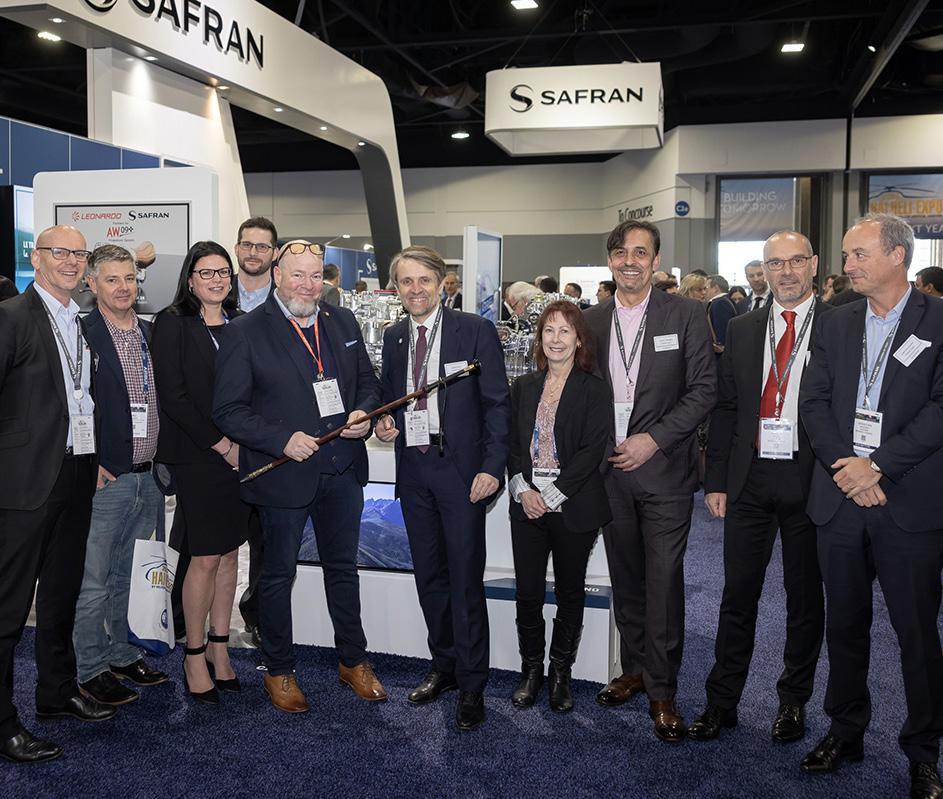
Safran Helicopter Engines has signed a contract with Coldstream Helicopters Ltd. to support Makila engines powering its AS332L1 Super Puma fleet. This Support-By-theHour (SBH®) contract formalizes a long-term Maintenance, Repair and Overhaul (MRO) and services agreement supporting Coldstream’s Makila 1A1 engines.
Coldstream is the global launch customer for this SBH® program, which Safran has specifically designed for utility operators of the Airbus Super Puma family.
This contract will be managed by Safran Helicopter Engines Canada, in Mirabel, Quebec, which provides North American customers with support services for the Arrius, Arriel and Makila engines as well as repair and overhaul of engines, modules and accessories.
Safran Helicopter Engines Canada CEO Stewart Noel said: “We are proud of this testimony of confidence from Coldstream Helicopters Ltd. in Safran Helicopter Engines and its SBH® support contract."
Coldstream Helicopters is a leading heavy utility helicopter operator, operating in diverse and challenging environments. Robert Gallagher, Coldstream President and CEO, states “Ensuring security of supply and predictability of costs is paramount in ensuring Coldstream’s ability to provide its customers with outstanding service and performance. This strategic relationship with Safran for SBH® support will be key piece to Coldstream’s continuing success.”
SBH® is Safran Helicopter Engines’ support-bythe-hour program. It makes engine operating costs predictable, eliminates cash peaks and allows flexibility for scheduled and unscheduled MRO coverage.
SBH® is part of EngineLife® Services, Safran’s range of solutions for helicopter engines.

10 avfoil news - issue 001
Leonardo & Morson Projects announce partnership in U.K.
Source: Leonardo Helicopters Press Release
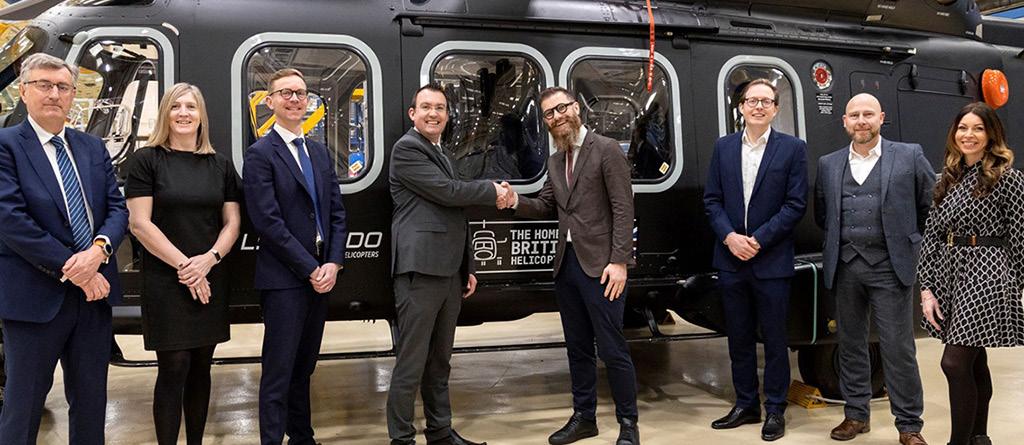
Leonardo and Morson Projects have signed a long-term Strategic Partnering Agreement (SPA), which will enable the UK’s only onshore helicopter manufacturer to offload engineering work to augment the company’s existing highly skilled engineering capacity.
Further to the contract signing on 3 March, Morson Projects will be managing engineering work at Leonardo’s UK helicopter facility in the South West of England through sub-contractors or through the management of fixed-price packages at one of Morson Project’s UK design offices in Northern Ireland and the North of England, covering Belfast, Manchester, and Hull.
Adam Clarke, Managing Director of Leonardo Helicopters UK, commented: “This Strategic Partnering Agreement enables Leonardo and Morson Projects to not only strengthen relations between the two companies, but it also secures engineering work and supply chain resilience across the UK.
Furthermore, if we are successful on large contracts like the UK MOD New Medium Helicopter programme, we will have a number
of skills available to us to support UK prosperity and our engineering ecosystem.”
Gareth Beck, Operations Director at Morson Projects, added: “The Prime Supplier Status award is the culmination of many successful years of Leonardo and Morson Projects working collaboratively and is testament to the hard work, passion, and commitment of everyone involved. Morson Projects is delighted that we can continue to work with Leonardo’s industry leading products and be at the forefront of capability enhancement.”
Best known for its onshore production of UK military helicopters and cutting-edge electronics on-board Royal Air Force aircraft, Leonardo is one of the biggest suppliers to the UK Ministry of Defence. Leonardo already employs over 8,000 people in the UK and recently opened a new site in Newcastle.
This SPA will enable Leonardo to support engineering projects, as required, across the UK beyond its existing company sites. Furthermore, the agreement continues the long-term relationship between Morson Projects and Leonardo into its third decade.
11 Feb 2024 - avfoil news #001
Black Widow Helicopters and XP Services Inc. Join Forces to Launch New Lima+ Black Hawk
Source: Black Widow Helicopters Press Release
Ina joint announcement, Black Widow Helicopters and XP Services Inc proudly introduced the next evolution of the Black Hawk: the Lima+. A product of unparalleled experience and innovation, this UH-60 Black Hawk variant is poised to redefine industry benchmarks globally.
Black Hawks have become the industry standard for aerial firefighting and utility operations. The Lima+’s marketing strength is based on the Black Hawk’s over 15 million flight hours and proven safety record, an established legacy support system for the model, and an infusion of upgrades and design changes to the avionics, engines, and mission equipment.
The Lima+, which includes the upgraded -701D engines and IDGB gearbox that gives the Lima+ a 9000 lbs lift capacity, will be standardized with the state of the art, FAA IFR Certified, Genesys NVG digital glass cockpit with HeliSAS autopilot for ease of navigation, a reconfigurable new cabin that accommodates up to 13 occupants and their equipment during emergency operations and it will also be equipped with the Aerometals Inlet Barrier Filter as well as light weight exhaust system and the GPMS Foresight Predictive HUMS.
The integrated health monitoring system (HUMS), could give operators a significant advantage in maximizing dispatchability while minimizing down-time and maintenance costs. After each flight, accurate diagnostics and early problem detection is available, enabling preventive maintenance measures to be taken before any catastrophic failures can occur.
Offered in three distinct build models –Commercial Utility, Public Safety, and MILSPEC, the Lima+ ensures adaptability, tailoring each build to mission-specific requirements.
“The UH-60 is a rugged and reliable platform for military and special mission operators and bringing these legacy aircraft out of military retirement and adding the latest innovation has to offer by adding capabilities like three
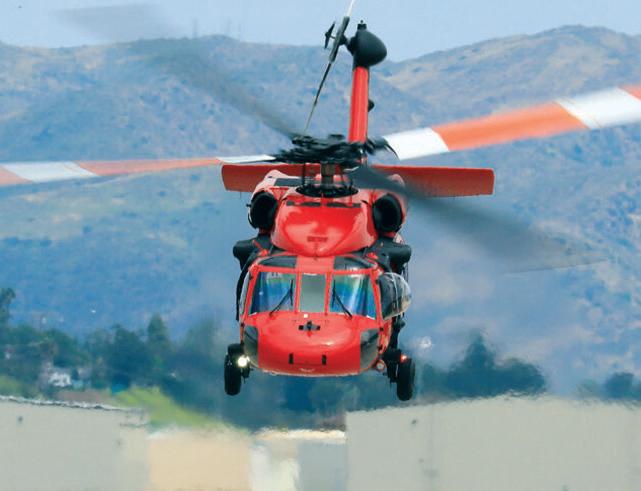
axis autopilot, synthetic vision (SV), highway in the sky (HITS), improved datalink weather, or localizer performance with vertical guidance (LPV) approaches, extends their utility and reliability to a level on par with — if not better than — new helicopters” said Rod Allison, CEO of XP Services.
The significant improvements of the Lima+ variant will make it better at all of those missions while also easier on the pilot workload. The Lima+ will be type certified with XP Services for commercial restricted category operators.
“We are thrilled to bring an industry-leading and cost effective upgrade to the Black Hawk which the market has been demanding for quite some time,” said Todd Dunphy, Chief Operating Officer of Black Widow Helicopters.
“We will be displaying a Lima+ technology demonstrator at HAI 2024 in Anaheim, CA. Together with XP Services and Primehawx, we are ready to build Lima+ models immediately as we have a fleet of 28 Sikorsky UH-60L available for modifications” Dunphy continued.
With the Lima+, the iconic Black Hawk seamlessly transitions into the 21st Century, exemplifying the perfect marriage of heritage and innovation.
The Lima+ will be built and modified with custom mission configurations in Tullahoma, Tennessee and Camarillo, California.
12 avfoil news - issue 001

Most Viewed Fixed StoriesWing2023
London Southend Jet Centre joins the AvFuel network
Source: Corporate Jet Investor
Author: Terry Spruce
The London Southend Jet Centre has joined the AvFuel branded network.
“Avfuel is eager to help London Southend Jet Centre serve the millions of people for whom Southend is the quickest, most convenient airport to East London and beyond,” Joel Hirst, Avfuel’s senior vice president of sales, said. “We couldn’t be happier about this partnership.”
Offering both luxury and convenience, London Southend Jet Centre is just a 12-minute helicopter ride to the center of London, 36 miles from London’s financial center, Canary Wharf, and provides twominute aircraft-to-car transfers, letting guests skip the terminal and go straight to their destination.
Travellers with time to spare can relax in Southend’s luxurious executive lounge with fireplace, leather furnishings and a bar, along with first-class customer service. The FBO also offers a conference room for 12, wireless internet, car rental arrangements, taxi service, on-site customs, a pilot’s lounge and weather briefing.
As an Avfuel-branded FBO, London Southend Jet Centre offers benefits, including competitive prices with Avfuel Contract Fuel, lucrative AVTRIP rewards and streamlined transactions with the Avfuel Pro Card.
Verijet Continues to Expand Operations in the Caribbean
Source: Corporate Jet Investor
Author: Conor Feasey

Verijet is continuing to expand its private jet and AI-powered air taxi service in the Caribbean. This follows the company’s expansion to the Bahamas last year.
The new destinations available are Puerto Rico, Dominican Republic, Turks and Caicos, the Cayman Islands and Providenciales.
Richard Kane, chairman and CEO, Verijet said the company has seen a successful adoption of its service on the US East Coast, with 52% repeat customers since just launching in 2020. “And we expect to see the same in the Caribbean market,” he added.
Verijet clients have access to smaller, local airports due to the compact size of the operator’s SF50 Vision Jets. Verijet said its AI-powered booking service optimises travel departure and convenience for travellers, as well as offering them the chance to lower their carbon footprint through offsetting initiatives.
“Sustainable travel has been a foundational goal for Verijet,” said Kane. “With our long partnership with 4AIR, we have further reduced the carbon footprint of air travel by purchasing carbon offset credits.”
14 avfoil news - issue 001
Wheels Up becomes world equestrian center official partner
Source: Corporate Jet Investor
Author: Conor Feasey

Wheels Up is now the official private aviation and hospitality partner for the World Equestrian Center (WEC) based in Ocala, Florida.
The company will be the named sponsor for all Grand Prix VIP shows and other events throughout the year at the venue.
The deal also entails that two events hosted at the venue during the 2023 show season will be named as the Wheels Up Grand Prix.
“We are thrilled to have the opportunity to become the official private aviation and hospitality partner of the World Equestrian Center,” said Bill Roberts, senior vice president, Communications, Public Relations and ESG, Wheels Up.
Wheels Up added that the partnership provides a valuable option for those looking to attend events at the venue, as there are no commercial flight options to Ocala.
The WEC, Ocala is an equestrian sports venue and hotel complex. With nearly around 378
acres of land, the Ocala site is the largest equestrian complex in the US.
WEC said it also has another 300 acres it plans to use for further expansion. It also has another facility in Wilmington, Ohio.
Roby Roberts, CEO, WEC said: “We are honoured to welcome Wheels Up as an official partner at World Equestrian Center – Ocala, and we’re looking forward to providing our guests and visitors with the opportunity to travel effortlessly to our future events.”
The equine industry is big business in the US. According to the American Horse Council’s 2018 Economic Impact Study, it contributes a cool $50bn in direct economic impact to the US economy, creating 988,394 jobs.
It also provides $38bn in wages, salaries, and benefits. From those direct effects, the horse industry’s contribution to the US economy totals around $122bn, and a total employment impact of 1.7m jobs.
15 Feb 2024 - avfoil news #001
Malaysian Jet Services trades back Falcon 7X for new Falcon 8X
Source: Corporate Jet Investor
Author: Alud Davies
Malaysian Jet Services is replacing its Falcon 7X with a factory-fresh Dassault Falcon 8X.
Falcon 8X MSN 451 was delivered new from Dassault’s Little Rock, AR, facility to Zurich Switzerland on June 25.
The aircraft is managed on behalf of Malaysian Jet Services by Execujet. Much like the Falcon 7X, the Falcon 8X is registered in Switzerland, where it wears the registration mark HB-JKV.
Malaysian Jet Services Falcon 7X MSN 116 / HB-JFN is currently listed for sale by Dassault.
According to ADS-B and ACARS data, HB-JFN left Kuala Lumpur’s Subang Airport on March 16th bound for Europe.
Following a short series of flight to Switzerland and Geneva, the aircraft arrived with Dassault in Bordeaux on April 5th.
Falcon 7X HB-JFN was involved in an in-flight incident in 2001 that resulted in the global fleet of Falcon 7Xs to be grounded.
Whilst descending through 12,000ft on approach to Subang Airport, the aircraft executed an un-commanded nose-up pitchtrim maneuver and climbed to 23,000ft.
The crew members were able to regain control of the aircraft and land safely, however the FAA and EASA immediately grounded all Dassault Falcon 7Xs in service whilst the cause of the incidence was investigated.
Aviation Safety Network (ASN) says that there were 112 Falcon 7Xs in service at the time of the grounding. The investigation, carried out by French authorities, found that a manufacturing defect in a small pin in the horizontal stabilizer electronic control unit (HSECU) had caused the issue.
To counteract the issue, Dassault installed a switch on the Falcon 7X cockpit that allowed the pilot to manually control the trim’s backup actuator.
Following the installation of the switch, and additional inspections of the HSECU, the Falcon 7X fleet returned to the air the following month.
Alongside the Falcon 8X, Malaysian Jet Services also operates Gulfstream G550 MSN 5355 / HB-JKI.
Both aircraft are based at Kuala Lumpur’s Subang Airport.

16 avfoil news - issue 001
Tamarack installs active winglets on Cessna Citation
Source: Corporate Jet Investor
Author:
Yuvan Kumar

Tamarack Aerospace announced the first installations of Active Winglets on two Cessna Citations at its new installation centre based at the London-Oxford Airport.
Winglets are retrofitted to the wings to help improve the aerodynamics on aircraft. Airbus – which calls them sharklets or riblets – and Boeing have been known to use them to reduce induced drag or drag due to lift.
Tamarack Aerospace founder and CEO, Nick Guida, said: “Keep an eye on us. We’re seeing more demand as word spreads about how the Active Winglet modification saves up to 33% of fuel usage, cuts down on noise pollution with shorter runways needs for take-offs and landings and provides safer and smooth flight.”
One set of the Active Winglets were installed on a CJ1, while the second set were installed on
a CJ2 owned by Sovereign Business Jets (SBJ). SBJ has also purchased winglets for one of its other aircraft – a CJ1.
“With Jet Maintenance International’s (JMI) expertise, the installation has gone smoothly and has been surprisingly speedy – seven days from start to finish. The performance benefits and the stylish looks of the winglets made this an easy decision for us,” said Garry Chalmers, managing director of SBJ.
Tamarack’s Active Winglets have been approved worldwide on a range of Cessna aircraft, including the CJ1+, M2, CJ2+, CJ3 and CJ3+.
Its European Installation Centre opened in July this year and operates independently out of the Oxford Jet Maintenance International (JMI) facility.
17 Feb 2024 - avfoil news #001
Business aviation needs 106K pilots and technicians by 2032: CAE
Source: Corporate Jet Investor
Author: Mike Stones
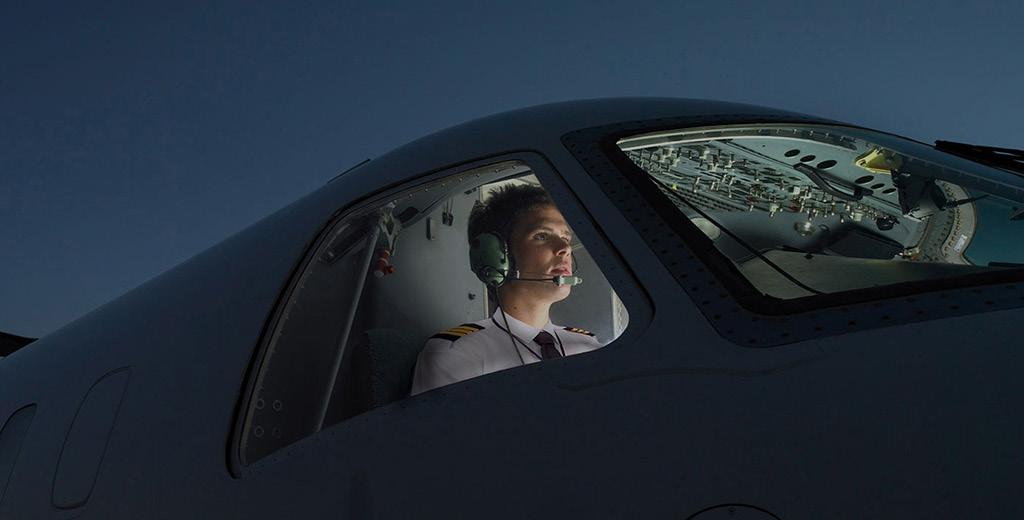
The global business aviation industry will need to recruit an additional 32,000 pilots and 74,000 maintenance technicians by 2032, predicts flight training company CAE. Commercial aviation will need to recruit 252,000 pilots, 328,000 maintenance technicians and 599,000 cabin crew, adding to a combined total of 1.18m staff. Overall, the aviation industry needs to recruit an additional 1.3m professionals within the next nine years.
Recruitment will be necessary to to fill vacancies due to retirement, and the aviation industry’s expansion, according to CAE’s Aviation Talent Forecast. More than one third (38%) of pilots are older than 50, according to FAA estimates.
Nick Leontidis, group president, Civil Aviation, CAE said the report revealed the scale of the recruitment challenge facing aviation. “With a need for 1.3 million people by 2032, CAE’s Aviation Talent Forecast is a call to action for the industry to promote careers in aviation to the next generation to reach out to underrepresented communities and develop innovative support programmes to expand the
pool of talent needed for the continued growth and safety of our industry,” he said.
As the growth in business aviation overtakes pre-pandemic levels and commercial aviation nears full recovery, new ways will be needed to find and retain staff. “CAE’s Aviation Talent Forecast shows that the demand will continue to grow and the industry will have to come together and find creative ways to ensure a steady pipeline of highly trained personnel for the next 10 years and beyond,” said Leontidis.
The business aviation fleet is predicted to grow by 18% in the years to 2032, from 22,000 to 26,000 aircraft. By contrast, the commercial airline fleet will achieve 39% growth to reach 43,000 jets.
The report identifies how many people will be needed in each region over the next decade, reasons for the high demand and what the industry can do to attract talent. It also offers insight on the industry’s use of advanced training, sustainable practices, and diversity recruitment. Highlighted are the roles
18 avfoil news - issue 001
of technology in shaping the industry, the importance of sustainability and the impact of diversity in filling the talent pipeline.
According to the report’s introduction: “The ebbs and flows we have seen in the industry, especially post pandemic, have reinforced that people will always need to travel for business, want to fly away for leisure, and millions will be attracted the excitement generated by a career in aviation.” Read more at the 2023 Aviation Talent Forecast.
Meanwhile, in a separate development, Airbus has confirmed it is on track to recruit more than 13,000 employees worldwide this year. So far, 7,000 new staff have been recruited despite a challenging labour market, said the manufacturer.
Plans are underway to fill the remaining positions with recruits playing key roles in boosting production ramp-up and delivering the company’s decarbonisation goals, it said.
Thierry Baril, chief Human Resources & Workplace officer, Airbus said: “Our recruitment efforts are paying-off and will continue to support our production ramp-up and company
transformation. We are focused on attracting, training and developing the best diverse talents in our company to help us shape the future of sustainable aerospace.”
The company is offering job opportunities in manufacturing, engineering and disciplines including: cybersecurity, software engineering and new propulsion technologies such as hydrogen, cryogenics and fuel cells. A third of the total recruitment will be allocated to recent graduates.
Aviation’s recruitment needs – in numbers (CAE Estimates)
Business aviation: 106,000 new recruits
• 32,000: Extra pilots
• 74,000: Maintenance technicians.
Commercial aviation: 1.18m new recruits
• 252,000: Extra pilots
• 328,000: Maintenance technicians
• 599,000: Cabin crew .
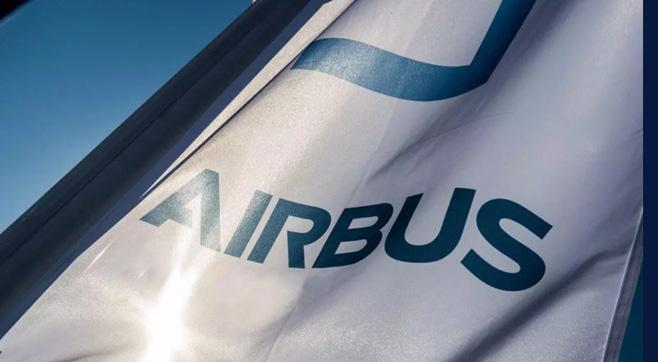
19 Feb 2024 - avfoil news #001
VOO integrates with FL3XX
Source: Corporate Jet Investor
Author: Yves Le Marquand

B2B private jet marketplace, VOO has integrated with FL3XX, with the aim of improving charter sales efficiency.
By synchronising the schedule with VOO, FL3XX users are able to search, book and pay for all their charters based on real-time information. Additionally, operators can synchronise each VOO booking with FL3XX to receive the same benefit. FL3XX bookings can be processed in FL3XX, and VOO bookings in VOO.flights without conflicts related to aircraft availability.
Paolo Sommariva, CEO and co-founder, said: “We are excited about our new partnership with VOO, which will enhance our FL3XX users’ charter sales experience by providing greater efficiency and flexibility.
With this collaboration, syncing the operator’s schedule with VOO’s marketplace is now a breeze, making the sales operation more streamlined and seamless than ever before.
We look forward to the possibilities this partnership will bring for our valued users.”
FL3XX integrates the workflow of an aircraft operator covering sales, scheduling, and dispatch all the way to training, reporting and maintenance management. FL3XX can increase the bottom line efficiency of any flight operator by more than 20%, it said. Whilst, VOO calculates accurate quotes, so brokers can book instantly, and payments can be made 24/7 with VOOpay.
Robert Plhak, CEO at VOO flights, said: “We are proud that FL3XX is the first flight management system connected to VOO. By synchronising the schedule, the availability of our FL3XX operators is now automatically displayed on VOO in real time.
We are very grateful to Paolo Sommariva and his team for their support and collaboration and are excited about the added value this partnership will bring to VOO users.”
20 avfoil news - issue 001

Most Viewed Future StoriesFlight 2023
Air taxis set to land Canadian jobs and revenue
Source: eVTOL Insights
Author: Boris Sedacca
New research by Horizon Aircraft shows growing support for the development of air taxi services in Canada, with73% of Canadians supporting the development of the eVTOL industry.
Nearly four out of five (78%) would be happy to fly in them once they are commercially operational. Just 7% say they would never use an eVTOL, while 15% are currently undecided. A major reason driving support for the industry is the potential to create jobs and boost the Canadian economy while also helping cut greenhouse gas emissions by reducing traffic congestion.
The global air taxi and urban air mobility industry is forecast to see revenues grow from $2.3 billion in 2021 to as much as $30.7 billion by 2031, with more than 430,000 air taxis operating worldwide.
The research by Horizon found that 75% of Canadians believe the jobs boost for Canada
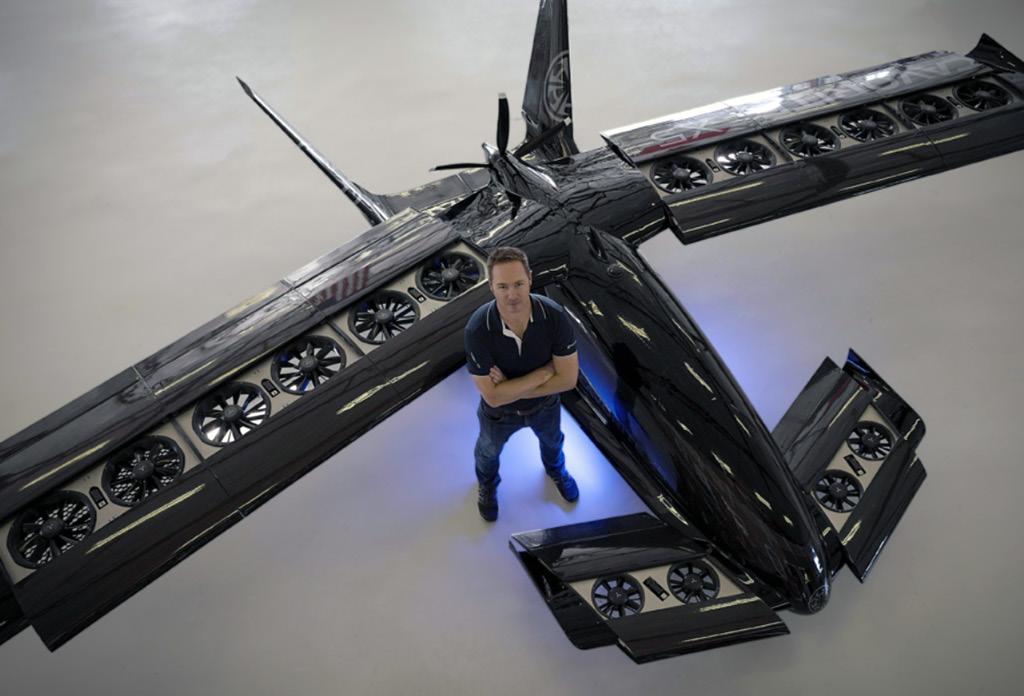
should increase Government support for the sector, while 68% want the Government to target becoming a world leader in eVTOL development.
Nearly seven out of 10 (69%) of Canadians believe the country’s geography and landmass give it major advantages over other countries and present a compelling case for developing a strong eVTOL market. Around 74% believe using eVTOLs will benefit urban areas by cutting traffic congestion and its impact on the environment.
Brandon Robinson, CEO of Horizon Aircraft, said: “The eVTOL market is expanding rapidly and will soon be a major global industry, which Canada can become a world leader in. We already have strong support from regulators and the Government, and public support is increasing as people see the opportunities to create jobs and generate revenue.”
Horizon Aircraft’s Cavorite X5 eVTOL is built for longer-range regional passenger or cargo, as well as special missions. It will take off and land vertically like a helicopter but will fly almost twice as fast at a fraction of the cost. It will have a maximum passenger capacity of four plus a pilot, a payload of 500 kg (1,100 lb), and an average range of 800 km (500 miles) with full fuel reserves.
Horizon’s technology allows its Cavorite X5 to fly 98% of its mission in a very low-drag configuration like a traditional aircraft. The fullscale aircraft will also be powered by a hybrid electric system that can recharge the battery array in-flight while providing additional system redundancy.
The study was conducted in May 2023 by independent research agency Pure Profile among a nationally representative sample of 1,000 Canadians aged 18-plus, which included 203 who currently live in or have lived in a remote area of Canada.
In April, Horizon Aircraft successfully completed initial transition flight testing of its Cavorite X5 half-scale eVTOL prototype at Ontario Tech University’s ACE Climatic Wind Tunnel in Canada.
22 avfoil news - issue 001
Lilium starts assembly of the Lilium Jet’s electric propulsion system
Source: Lilium Press Release

Lilium, announced that it is starting assembly of the Lilium Jet’s revolutionary electric propulsion system at its dedicated propulsion facility located next to its headquarters in Wessling, Germany.
The announcement marks another exciting milestone on the targeted path towards industrialization and commercial entry into service of the Lilium Jet and reconfirms Lilium’s roadmap towards achieving first manned flight of the aircraft in late 2024.
Yves Yemsi, COO of Lilium, said: “The start of propulsion assembly represents a significant step towards industrializing the Lilium Jet. In the coming weeks we will be systematically working towards validating our manufacturing capabilities and preparing to deliver the propulsion units for initial aircraft integration and type-certification testing.”
Klaus Roewe, CEO of Lilium, commented: “Today’s announcement brings us one big step closer to the dawn of a new, sustainable jet era. The iconic, sleek aircraft design is a key differentiator of the Lilium Jet. Thanks to the unique propulsion system and aerodynamic jet architecture, I believe the Lilium Jet will set the benchmark for the eVTOL industry, opening the way for superior performance, unit economics and comfort. Ninety-five percent of commercial airplanes today use jet engines, which offer high safety in addition to the best cabin experience
with low vibration and noise, combined with great payload and range potential.”
Daniel Wiegand, Lilium co-founder and chief engineer for innovation & future programs, remarked: “For my fellow co-founders and myself, the start of industrial assembly of the Lilium Jet’s propulsion unit marks a special moment. It was our shared belief in the radical potential of our electric jet technology that formed the nucleus of our company and that has driven Lilium forward ever since. I’m more convinced than ever that our vision of a sustainable new form of high speed and affordable regional transportation will become a commercial reality.”
In the first phase of assembly, the propulsion system’s rotating parts, including the shaft, magnets and titanium compressor fan are assembled and mated with the associated static components such as the e-motor stator and guide vanes (for structural support and cooling).
These are then integrated into the high performing engine. In the next phase later this year, the electric engines will be integrated into the Lilium Jet’s propulsion mounting system, the unique flap structure that forms the rear part of the wings and front canards and that houses the propulsion and vectoring systems responsible for vertical and horizontal flight.
Successful testing of propulsion subsystems
The start of assembly follows extensive testing of propulsion subsystems delivered by suppliers: The custom-designed aircraft e-motor, developed and built-in collaboration with Denso and Honeywell; the titanium compressor fan, developed and built in collaboration with Aeronamic; and electric motor bearings built in collaboration with SKF.
In July this year, Lilium completed testing of a full-size prototype Lilium Jet fan and stator at Jetpel’s facilities, one of Germany’s leading aviation technology centers, which confirmed the fan design’s robust operating parameters.
23 Feb 2024 - avfoil news #001
Jetson One: Personal flying vehicle Sold Out for 2023, nearly all of 2024
Source: www.autoevolution.com
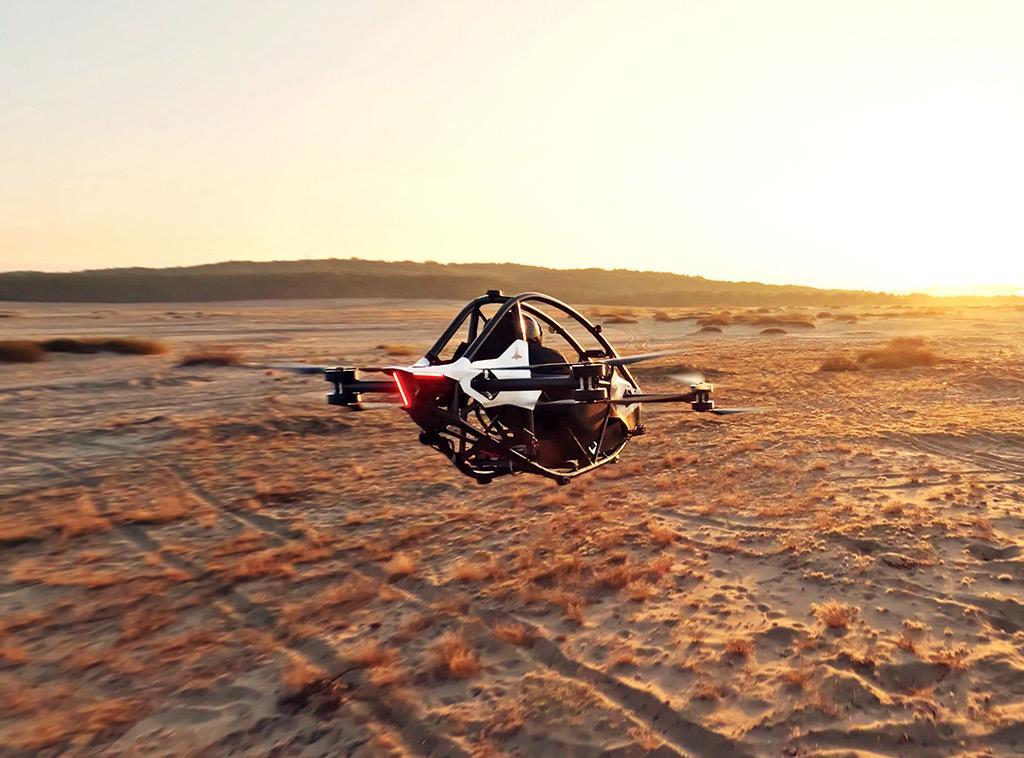
Who would have thought that personal flying vehicles would prove to be such a hit, but Jetson One, a global leader in the market, is showing the way. The company recently said that its planned 200 production units for 2023 is now sold out, while 2024 orders are close to completion with just three craft still available, reports autoevolution.com. In the first month of 2022, Jetson had already sold out all the units for that year and the overall sales figure has now hit 3,000 purchase requests since October 2021.
The vast majority of sales are in the U.S. This is because after originally being founded in Poland and then relocating to Sweden, the company moved its HQ to Palo Alto, California.
The craft comes in kit form and costs around USD100,000. Purchasers require an USD8,000 deposit first. Others suggest, if assembled by the company, the price is around USD150,000. Jetson One was specifically designed for private use and doesn’t require a pilot’s license.
Last summer, one of the company’s cofounders, Tomasz Patan, flew his own
Jetson from his home to work, completing what he claimed was the first eVTOL commute in the world. The pioneering flight, part of which can be viewed on video via the company’s social media platforms, reduced the normal travel time by 88 percent.
The article states, “Although technically not a flying car (it doesn’t combine flying capabilities with riding on roads), the Jetson One is pretty close to a winged alternative to personal vehicles. It’s small and lightweight and fitted with eight motors that can propel it at 63 mph (102 kph).
“At the same time, it claims to offer exceptional safety, starting with the race car-inspired frame, down to state-of-the-art safety systems, including a triple-redundant flight computer, terrain tracking, and obstacle avoidance.”
This personal flying vehicle can be flown by almost anybody after basic training. To repeat, no pilot license is required. The specifics of its structure and recreational purpose place it in a separate category in terms of regulations, which greatly simplifies the road to certification.
Wealthy people who own large tracts of land or others like farmers who can use it like a quad bike or tractor to travel around a farm, are its natural customers.
Jetson has a much larger vision for the future. The company aims to construct an aircraft version that can include passengers, culminating with a four-seat flying car by the end of this decade.
For more information
https://www.jetsonaero.com
24 avfoil news - issue 001
Zapata Personal Airscooter VTOL Aircraft “to launch in 2024”
Source: eVTOL Insights
Author: Chris Stonor
Imagine
a scooter, now see it flying in the sky. That is the vision of inventor, Franky Zapata, who has created a personal Airscooter VTOL one-seater aircraft. First shown at the Paris Viva Technology event in June, the craft wowed the crowds and Zapata now says, “It will be commercially launched next year.”
The craft with its patented hybrid-electric propulsion system is compliant with the Federal Aviation Administration (FAA) PART 103 Regulations, and therefore does not require a flight certificate and so can be flown without a pilot’s license in the USA and China as an “ultralight aircraft”.
The company explains on its website, “Airscooter offers a longer flight time than any other VTOL in the market; patented computer assisted fly by wire controls ensure the highest degree of safety while requiring minimal training; and thanks to its hybrid powertrain and sustainable fuel, the Airscooter carbon footprint is comparable to a passenger car.”
The Airscooter comes in the form of a fully glazed cockpit resembling an egg and is piloted using two joysticks. It has a top speed of 100 km/h, a cruise speed of 80 km/h and a flight time of more than 2 hours. The maximum payload is 120 kg.

Described by the company as “the world’s most advanced personal flying machine”, it will compete with the growing number of one-seater personal aircraft now being developed including Lift’s HEXA, the Jetson One and RYSE Aero.
Zapata’s Community Manager, Beatriz Esteban Cara, talking to Euronews Next at the VivaTech event, said that the public will be able to have a go at flying the scooters in flight centres located around the US from next year. The first to open will be in Lake Havasu City, close to Phoenix, Arizona. She emphasised that the Airscooter is safe, for if anything does go wrong, onboard computers can automatically guide the scooter safely back to earth.
Zapata’s initial aim is to sell the aircraft to companies that want to open their own flight centres to offer customers recreational flight experiences. Therefore, it is unlikely you’ll be seeing these scooters flying overhead in European cities any time soon. The cost to buy such an aircraft is unclear.
44 year-old Zapata is a fascinating character. He is the inventor of the Flyboard and Flyboard Air and founder of Zapata Racing in 1998 which he later sold to a U.S defence contractor. Since 2012, Zapata’s efforts have been focused on the development and manufacture of personal flyers for land and aquatic applications.
In August 2019, Zapata crossed the English Channel in just 20 minutes using a Flyboard Air, with a refuelling stop at midpoint. His 22-mile journey was completed with an escort from several French helicopters and warships, while aided by a backpack fuel reservoir.
Films of him on hoverboards and flying via a jetpack have gone viral across social media.
For more information
https://www.zapata.com
25 Feb 2024 - avfoil news #001
Alef's flying car receives FAA special airworthiness certification
Source: Revolution.Aero
Author: Yves Le Marquand
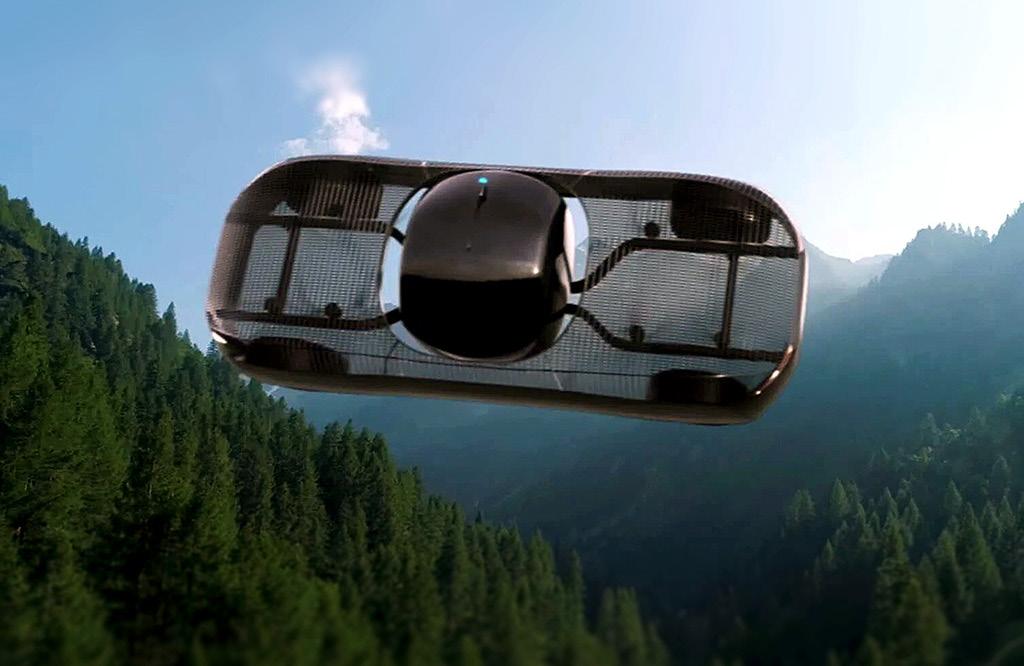
Alef
Aeronautics has become the first road legal electric car to be certified by the FAA – through a special airworthiness certificate.
The firm unveiled its ‘Model A’ flying car after emerging from stealth in October 2022 and has been taking $300,000 preorder deposits for the vehicle since and is currently raising for its Series A investment round. The Model A is marketed as the only electric vehicle capable of vertical takeoff and landing from a parking space that can also drive on public roads.
“This is one small step for planes, one giant step for cars,” says Jim Dukhovny, founder and CEO of Alef.
Alef started as a small drone in 2015. Eight iterations later, the team is test flying and driving a full-scale prototype. The Model A will be capable of carrying one passenger 200 miles on roads or 110 miles by air. With no foldable wings, the car body rotates 90-degrees once airborne to act as a flying wing with thrust provided by eight rotors integrated into the body of the vehicle. A mesh forms the upper surface of the car from the outer edge of the body to the passenger compartment which enables airflow for the rotors. Dukhovny tells Revolution.Aero that Alef has been flying for a long time, but, emerged from stealth only late last year. The firm does not like coming to the press unless it has some “real news” to make public, he says. This is one of those occasions.
Dukhovny is keen to distance Alef from eVTOL OEMs. It is not an aviation manufacturer. “Our use case is automotive, our market is automotive,
our business model is automotive. That being said, when you get to the technology and legal side of things, we spent most of our time on aeronautics because this is a harder problem to solve. However, we are not an air taxi. We are not a traditional eVTOL like Joby or Archer. We are a car with one more functionality and everything else comes from that.”
Dukhovny founded Alef because his father, Joseph (Leonid) Dukhovny – a famous Ukrainian folk singer and Soviet space scientist – passed his love of science fiction on to his son. That genre, which has inspired daydreams for decades, clearly defines what a flying car should look like. “It is hard to find a person anywhere in the world who hasn’t read a book or seen a film with a flying car in it,” he says. “People understand how it is supposed to function, so we should deliver to people the product they want rather can calling everything ‘flying cars’.”
The problem with working inside that definition is the technological constraints all eVTOL OEMs face – size and weight. Alef’s Model A has to fit in a parking space and driving lane, but still be capable of vertical takeoff and landing and flight. “This has been one of the biggest challenges because the laws of physics do everything to stop you from doing that. Transition is the way we have been able to solve this problem,” says Dukhovny.
He says that Boeing and Lockheed Martin both previously attempted this technology and failed. Alef’s patented system attaches the passenger compartment to the main body through a gimbal, allowing it to rotate. This transforms the car into a flying wing where the bodywork extends to the driver’s left and right. “It is not because we are cooler or smarter than Lockheed or Boeing, it is probably because the timing was wrong,” he says. Transition is made possible through software, which makes today’s computing power much more capable of performing this action. (There is also the fast-evolving drone industry to learn from.)
Whilst the award of the special airworthiness certificate is nothing new in the world of eVTOLs, it is in ground transportation. “This is the first car
26 avfoil news - issue 001
that can drive on the street, it is driving on the roads right now, which also has the certification to fly,” says Dukhovny. The certification essentially creates an aerial testbed in which Alef can continue to flight test Model A through the full flight envelope. Whilst the exact location of the airspace has not been released, Alef has a specific set of coordinates within Silicon Valley outside of any densely populated and routine air traffic areas, explains Dukhovny. “Whilst there are limitations this gives us everything we need right now to continue testing and more.”
After making contact with the FAA, the certification process took no more than a few months. Dukhovny gives the FAA credit for its approach with limited resources. “Many people say the FAA is slow and it can be. But as you know, eVTOLs don’t fit in the current process and flying cars don’t fit even more.”
Dukhovny believes Alef’s ‘obssession’ with safety helped make the process more efficient. The car has 12 motors in total, one for each wheel when driving (common in modern cars) and one for each rotor when flying. All of which are fully redundant. Each of these motors could potentially be powered by an independent battery which would up the safety levels further.
The team has been testing its prototype with the batteries located underneath the passenger compartment and has yet to decide on which approach. “There are advantages to both. We are crazy about safety, so having eight separate batteries ups the redundancy, but also having one grouping of battery cells increased safety in terms of centre of gravity,” says Dukhovny. “The FAA could see there was both intersystem and multi-system redundancy [with the Model A]. Even if there was a complete system failure, we have backup system that can take over.” Compared with aircraft and helicopters flying today, Dukhovny claims Model A has at least eight times the safety levels.
In a statement regarding the special airworthiness certification, the FAA said: “The FAA issued a Special Airworthiness Certificate for the Armada Model Zero aircraft on June 12, 2023. This is not the first aircraft of its kind for which the FAA has issued a Special Airworthiness Certificate. This certificate allows the aircraft to be used for limited purposes, including exhibition, research and development.” Defining itself to regulators, who have often
labelled Model A no differently from a Cessna, has been a challenge for Alef. “If you class us as a Cessna, there are a lot of questions. There is a lot of terminology that does not apply. We cannot be looked at the same way as Sikorsky, Cessna, Boeing or Airbus. I understand that policy is going to take some time to be formed and the FAA is doing a good job, so big kudos to them. But, as of today, trying to fit us in any existing light, sport aircraft or helicopter class does not work. Hence, we have to come up with some creative solutions in the short-term.”
He is not neutral, but Dukhovny believes, that compared with eVTOLs, flying cars can get to market as quickly as eVTOLs and then scale at a greater pace. The first use cases for air taxis are largely as a supplement to helicopters and will be used mainly by business travellers he says. “The reason for it is infrastructure. If you think about what Joby needs to operate in London for example, what needs to be there? A lot of helipads need to be adapted and you know how long it takes to build in London,” he says. “Expensive too. And that price is going to be passed to a consumer. I think AAM is much smaller scale in the long-term.”
Alef’s Model A can be a car for the whole commute should you wish. But then when the opportunity to fly, skip that traffic and save time comes up, you can take it. However, it is going to be a long time, if ever, before you can lift off from the interstate 405 and skip the rush hour jam. “So, while no one is taking off the freeway in the short-term, what you can do, after talking with cities such as Palo Alto, is take off from a designated area within a city,” he says. “Cities will mark certain areas in which takeoff and landing is okay, areas where flight is okay and areas where you can never go. The idea is, at first, you have a very small amount of designated white-listed areas for landing and taking off. This can then be expanded over time and in the future hopefully the majority of the city will available.”
The challenge to that expansion will be public acceptance, especially those living within the first white-listed areas (another reason why Dukhovny says he is so focused on safety). But Alef does have one big advantage compared with other OEMs currently certifying, according to its CEO. “As I said, everybody has seen or read about a flying car before. So, I expect it is naturally going to be a lot easier for people to accept something that doesn’t look dissimilar from a Toyota.”
27 Feb 2024 - avfoil news #001
Lilium completes final design organization approval audit by EASA
Source: Lilium Press Release
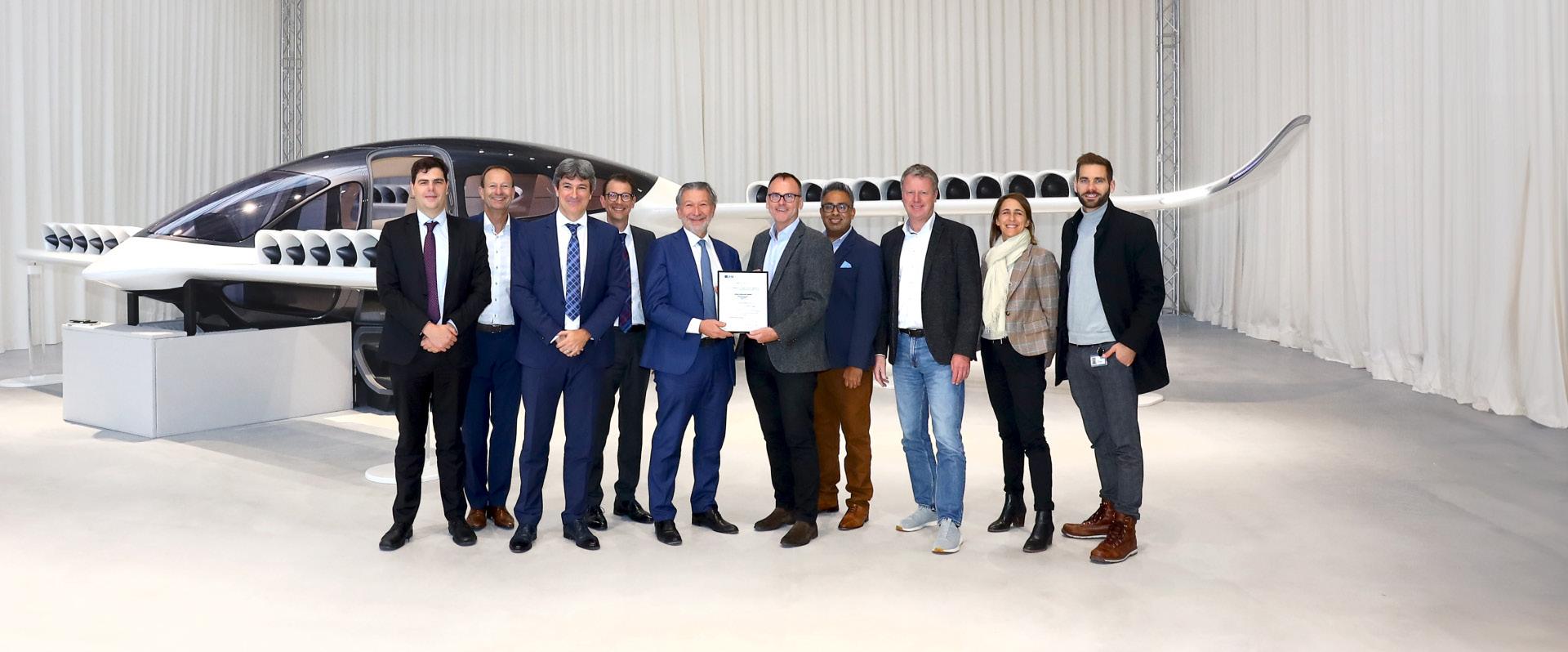
Lilium, developer of the first all-electric vertical take-off and landing jet, announced today that it has successfully completed the fourth and final Design Organization Approval (“DOA”) audit by the European Union Aviation Safety Agency (“EASA”).
The successful completion of the DOA audit is a key milestone in Lilium’s progress toward becoming an EASA DOA holder, a requirement for aircraft manufacturers, and demonstrates that Lilium has the necessary organization, procedures, competencies, and resources to design and certify aircraft.
EASA grants DOA holders’ special privileges. In particular DOA holders can a) have compliance documents accepted by EASA without further verification and b) perform activities independently from EASA.
In collaboration with EASA, Lilium is pursuing a DOA specifically tailored for eVTOL and electric propulsion certification.
“In simple terms, a Design Organisation Approval can be thought of as a ‘licence to operate.’ An aerospace company in Europe can neither hold a Type Certificate, nor undertake or approve design activity without having a DOA. Successfully completing the fourth and final DOA Audit pays tribute to the calibre of our
team and the rigour of our design processes,” said Alastair McIntosh, Lilium's CTO.
Lilium applied for EASA DOA in 2017 and has since been working to develop, implement, and demonstrate the appropriate systems and resources. Having completed this fourth EASA audit, Lilium will now enter the final phase of the DOA process – the follow up and closure of outstanding actions and administrative steps to complete the process. Satisfactory conclusion of this phase leads to the issuance of the DOA certificate, targeted for later this year.
In parallel with the ongoing DOA process, Lilium continues to make substantial progress towards type certification of its Lilium Jet. Lilium was awarded its EASA certification basis for the Lilium Jet in 2020. EASA’s requirements (“SC-VTOL”), published in 2019 after extensive industry consultation, represent the highest safety objectives globally for eVTOL aircraft. As previously announced, Lilium has submitted 100% of its proposed certification plans for the Lilium Jet, with 78% of the Means of Compliance agreed or accepted.
The FAA issued its G-1 for the Lilium Jet last month, making Lilium the only eVTOL manufacturer with both an EASA and FAA certification basis for a powered lift eVTOL aircraft.
28 avfoil news - issue 001
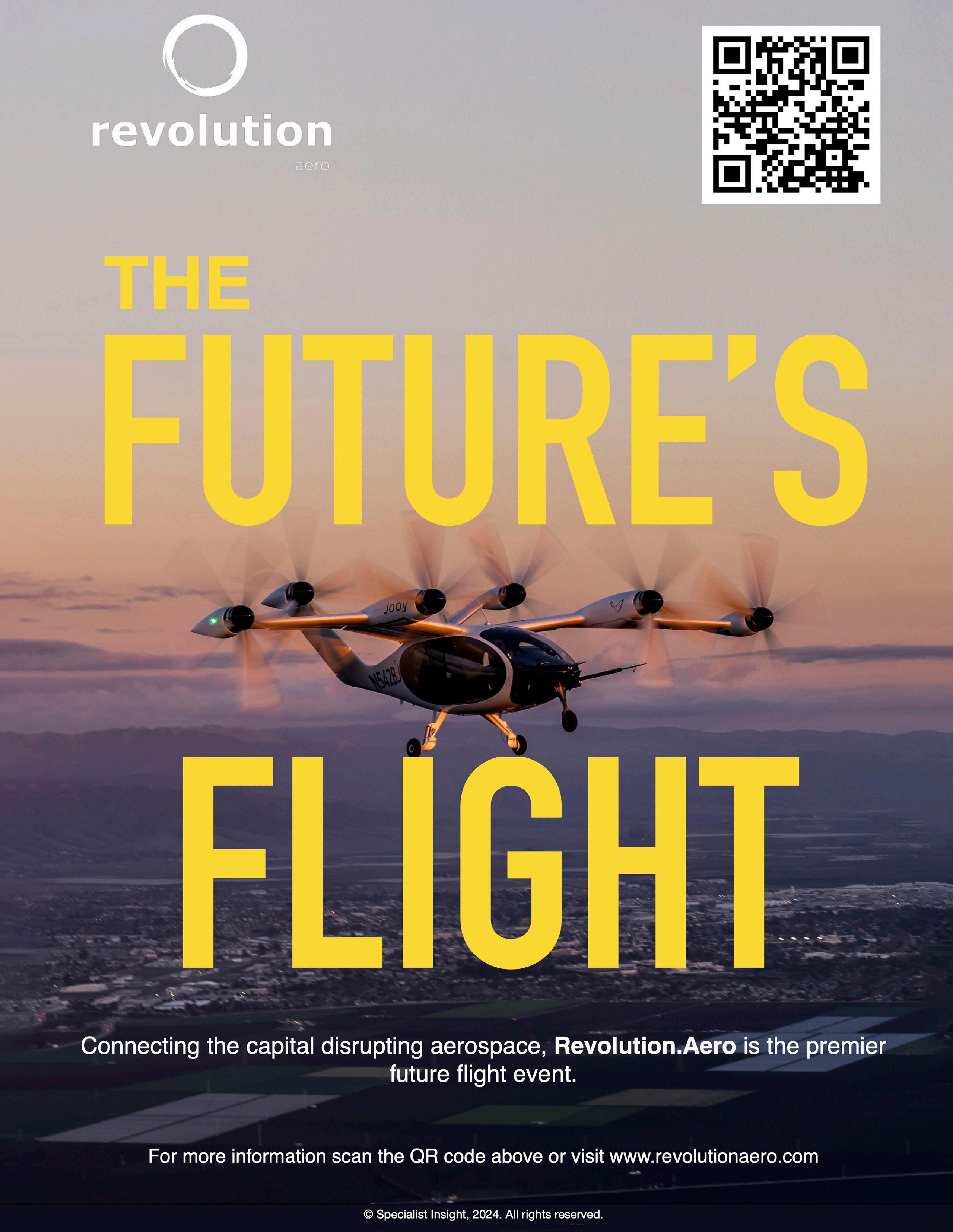
Most Viewed UAS/UAV Stories 2023
Reality Check: Former Amazon executive says company should Shut Down its Drone Programme
Source: eVTOL Insights
Author: Chris Stonor
Amazon’s dream of becoming the leading drone delivery company in the world continues to sink in to oblivion.
Brittain Ladd, a Supply Chain Consultant and Former Amazon Executive, wrote on his personal blog recently: “There comes a point in time when individuals and companies must face the facts and accept reality. Amazon should shut down its drone program.”
His frustration grows after the company has lost two executives key to its drone operations. Jim Mullin, Prime Air’s Chief Pilot, left last month, whilst Robert Dreer, who reported to Mullin
and was responsible for all of Prime Air’s test operations, departed last week for a role at eVTOL Aircraft startup, Opener. Ladd points out: “Amazon has been touting since 2013 that they would become the leader in delivering packages that weighed five pounds or less via drones. Amazon isn’t close to achieving their goal.”
Despite receiving millions in funding, Amazon Prime Air is only testing drones in two small markets, and the program has been plagued by drone crashes and poor performance.
Ladd continues: “I have been a critic of Amazon’s drone program from the beginning because I don’t believe drones will benefit then company except in a few limited use cases. I certainly understand why people at Amazon got excited about using drones. Yes, they’re cool and fun to fly. They’re also a nightmare of regulations.” Adding, “I remain convinced that Amazon should immediately shut down their drone program.”
He concludes, “Some may argue that Amazon should keep the program and increase the funding. I disagree. Drones are a distraction to Amazon and little progress has been made. Andy Jassy (Amazon CEO and President) needs to make it clear that enough is enough and that there are more important priorities for Prime Air and Amazon.”

30 avfoil news - issue 001
Volatus Aerospace completes acquisition of Empire Drone
Source: Volatus Aerospace Press Release
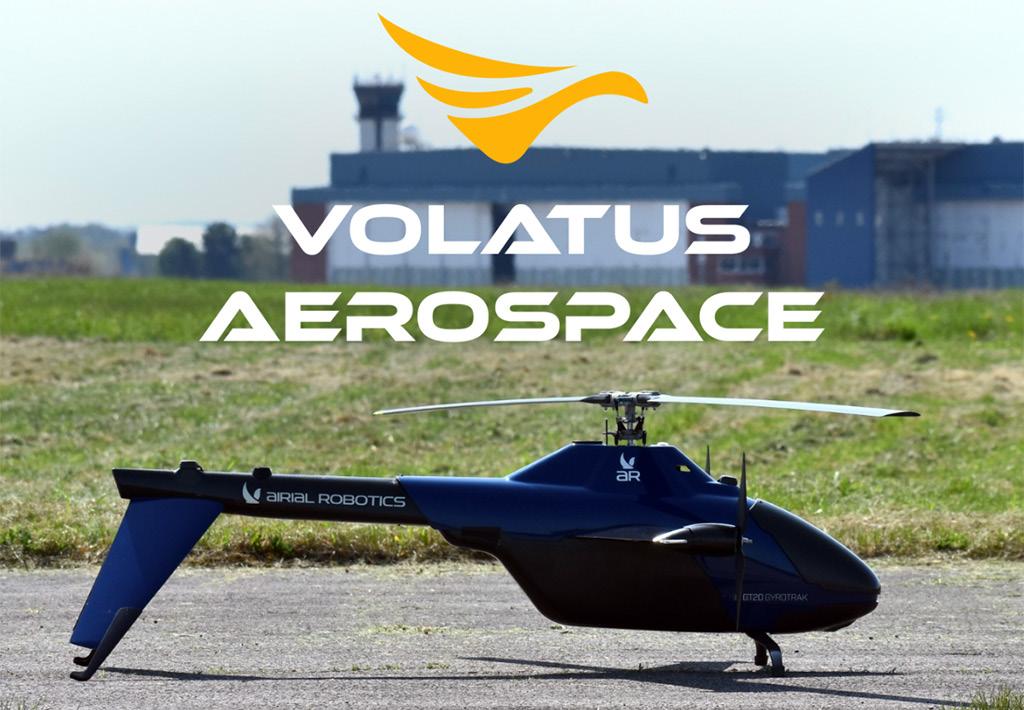
Volatus Aerospace Corp. acquired Empire Drone Company LLC. The acquisition provides Volatus with expanded distribution for drone technologies in the American Market and a corresponding increase in gross margin performance for all US sales.
“The addition of this company adds approximately $2.3M in trailing proforma revenue with an estimated 7% proforma EBITDA,” said Abhinav Singhvi, Chief Financial Officer for Volatus Aerospace. “The ability to support our US sales with domestic inventory and support is also expected to improve general gross margin, inventory turnover, and make our logistics management more efficient.”
Under the terms of the agreement, Volatus will purchase 100% of the company for a
cash consideration USD$300,000 on Closing; (ii) issuance of 721,538 common shares at a deemed price of CDN$0.65 per common share on closing; and (iii) subject to certain revenue milestones 12 months after closing, issue up to an additional 721,538 common shares at a deemed floor price of CDN$0.65 per common share or 30 days VWAP on first anniversary from closing, whichever is higher.
Volatus Aerospace distributes products and services in Canada under the Volatus Aerospace, OmniView Tech, MVT Geo-solutions, Canadian Air National, and Synergy Aviation brands; in the USA under the Volatus Aerospace USA, ConnexiCore, and Empire Drone Brands; in South America under the Volatus Aerospace LATAM brands; and in European Markets under the Volatus Aerospace UK, and iRed Remote Sensing brands.
31 Feb 2024 - avfoil news #001
“Crucial step” on road to commercial beyond-visual-line-of-sight (BVLOS) operations receives FAA approval
Source: Revolution.Aero
Author: Yves Le Marquand
The FAA has issued its first ever approval for commercial beyond-visual-line-of-sight (BVLOS) operations, in what has been described as a “crucial step” for the large drone sector.
The approval comes off the back of requests to the FAA by four companies — Phoenix Air Unmanned, uAvionix, UPS Flight Forward and Zipline — to conduct BVLOS drone operations at 400ft or below. After a request for public comment closed in June, the FAA has now approved these firms to begin operating.
“This first ever issued civil BVLOS approval for a helicopter of that size in the US is going to unlock that market for commercial operations, particularly in the domain of long-range critical infrastructure inspections,” Ulrich Amberg, CEO, SwissDrones (the OEM supplying Phoenix Air Unmanned with its SDO 50 V2 aircraft) told Revolution.Aero. The firm already has some FAA airworthiness approvals including for flight
tests and demonstrations, its aircraft also has an ’N’ tail number.
“Whilst this does mean we are set for growth in the large drone sector, especially in critical infrastructure inspection, it is not that simple,” explained Amberg. “It is not the same as manned aviation, where you have either type certification, then you’re rubber-stamped to do whatever you want with that aircraft, or no flight approval at all.” With large drones it is a staggered approach, EASA framework considers operational risks and assesses to work this out. That assessment delivers an outcome which tells you at which risk level you are approvable through a combination of your capability as an operator combined with the technical features of the aircraft.
“This is a clever approach because it allows the whole industry to go about this in a step-bystep approach. Rather than saying either you
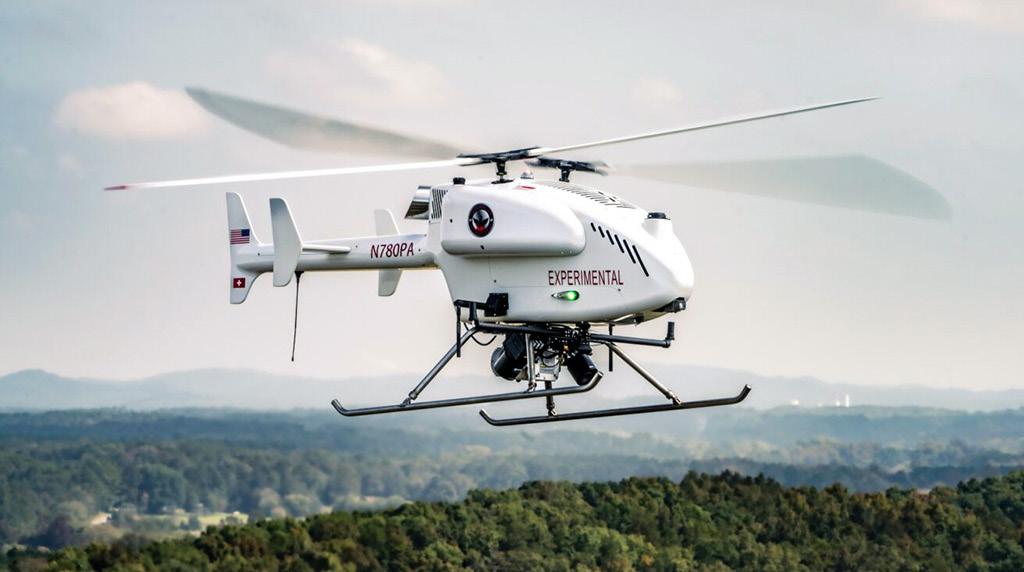
32 avfoil news - issue 001
get type certified or you don’t fly at all, which would basically kill the whole industry because getting a type certificate as per manned aviation standards is something that will cost you $100$500bn. Not many OEMs would ever get that money back from aircraft sales.”
The US approach is slightly different and the FAA has received some criticism for this, said Amberg. “They are still making their minds up on how they want to regulate it in full. It is called the Part 108 framework and will extend the Part 107 for small drones. But it is not there yet.” So today operators have to file exemption petitions to be exempt from what is basically a ban. This means the ruling issued by the FAA for Phoenix Air Unmanned is an exemption on the FAA’s Part 91 framework. “Not unfortunately part of a systematic framework as seen in Europe,” he added.
With approvals to operate commercially in over 40 countries, SwissDrones is no stranger to regulatory processes. As well as approvals to flyer customers in Canada, Indonesia and some other locations in Asia, SwissDrones is also near to attaining approval in Australia, according to Amberg.
“For the last four or so years — aside from the R&D, early market testing and product development — we have been focusing on the regulatory developments. We have also reverse engineered against those requirements as well to inform the product development process of our helicopters. Also, the operating procedures and all other documentation needs to come along with that. This has placed us pretty much at the front-end of the crowd. It is not just coming, we have approvals to fly in around 40 countries in the world today,” he said.
There are two main regulatory bodies in aviation globally. The FAA and EASA — which covers 32 countries in Europe. Around two years ago, Europe implemented an entire drone regulation framework that has been ratified by all EASAmember countries.
There are multiple ways to get approvals. In a nutshell, you can apply for individual flight
approvals for every flight mission, but that requires the need to provide all documentation for each and every mission. “This is not a viable option for a commercial business, because that is going to kill you. But that is what is out there now and it is creating quite a lot of work for regulatory authorities who are receiving thousands of these applications,” said Amberg.
The other pathway, known as a light unmanned operator’s certificate, requires applying for delegated authority to approve your own flights. “This then means you are acting on behalf of civil aviation authorities and they delegate the right for you to do so as an operator. This is the most far-reaching and difficult approval to obtain and is very similar to an AOC [air operator certificate] found in manned aviation,” said Amberg.
David Spurlock, managing director, Diamond Stream Partners is an investor in SwissDrones and advocate for the commercial large drone sector. He told Revolution.Aero: “We are on a walk into the future of which the end is unclear. There remain many questions around aspects like safety and public interest… do we end up with the Jetsons and thousands of drones flying overhead. I don’t think we will. But on the other side of that scale there is a definite public interest and this is where companies like SwissDrones can help to achieve that.”
Focusing on search and rescue, firefighting and infrastructure inspection use cases feeds directly into the public interest case, explained Spurlock. Pointing to the growth in size and construction tempo of major infrastructure seen over the past century, there is a need for suitable means to be able to inspect this infrastructure. “That is not possible or inefficient to do from the ground. It is also very expensive to do so with traditional manned aviation. Therefore making it much more effective to do with a drone.
“There is so much potential to improve society by choosing the right first places to allow unmanned flight and infrastructure inspection seems like the perfect fit for solving real-world problems that exist today. This approval is a very important moment for the sector,” added Spurlock.
33 Feb 2024 - avfoil news #001
Elroy Air secures more than $2B in total aircraft demand and moves to new flight test facility
Source: Elroy Air Press Release

Elroy Air, the company developing the first endto-end autonomous VTOL aerial cargo system, has signed an agreement with LCI, a leading aviation company and a subsidiary of Libra Group, for commitments to purchase up to 40 of the company’s Chaparral VTOL aircraft, with down payments on a number of the vehicles.
The company has now secured more than $2 billion in aircraft purchase demand in the commercial, defense and humanitarian sectors.
“We’re experiencing an enthusiastic response to the Chaparral and its capabilities to serve as a key part of a safe, efficient, and capable fleet of aircraft to respond in emergency situations, keep pilots out of harm’s way, and enable rapid logistics in a new and sustainable way,” said David Merrill, CEO and co-founder of Elroy Air.
“Through our agreement with LCI, the Chaparral will be available for financing — enabling much broader access to the aircraft. We are proud that the Chaparral will now be part of LCI’s aviation fleet and look forward to providing aerial cargo transport globally.”
The Chaparral is the first end-to-end autonomous VTOL cargo delivery system. It is designed for
aerial transport of up 500 pounds (225 kilograms) of goods over a 300 nautical mile range, enabled initially by a turbine-based hybrid-electric powertrain with distributed electric propulsion, and specially designed aerodynamic modular cargo pods.
“Applications for the Chaparral include aerial cargo transport for disaster relief, firefighting and humanitarian operations without risk to pilots or the need for airport infrastructure,” said Kofi Asante, vice president of business development and strategy. “What’s particularly exciting about our agreement with LCI is that it unlocks financing for the Chaparral for humanitarian use and enables us to share the Chaparral’s capabilities worldwide.”
Jaspal Jandu, CEO of LCI, says: “This commitment for the pioneering Chaparral system will enable us to efficiently support mission critical, remote logistical work and socially responsible humanitarian work around the world. It will do so in complement with the wide-ranging capabilities of our existing aviation fleet.
“We have been impressed with Elroy Air’s vision and approach and look forward to working
34 avfoil news - issue 001
closely with the team on a wide range of market opportunities. This forms part of our wider advanced air mobility strategy and will strengthen LCI’s position as a leading provider of leasing, financing and investing solutions for this new and exciting market.”
Elroy Air has moved its flight testing facility to Byron Airport in Byron, California. The company is using the new facility to support full-scale ground and flight testing. The company will initially be conducting tie-down testing to validate the software and hardware of its Chaparral C1 vehicles to validate safety of flight through a series of ground tests.
Elroy Air has moved its ground control station (GCS) to the airport, a custom-built mobile enclosure with engineering stations, weather monitoring, viewport windows, a dedicated network infrastructure, a datalink control and monitoring radio system and a rooftop
observation deck. The GCS contains its own uninterruptible power supply (UPS), aircraft monitoring computers, and a climate control system. The GCS will be used to support both ground and flight tests.
In partnership with Urban Air Mobility — a joint-venture between MS Commercial, Inc. and Nearon Enterprises — Elroy Air has leased and prepared a new hangar at Byron airport for its ground and flight test campaigns, to ensure smooth and efficient progress to first flight and beyond.
The hangar is equipped with a large aircraft storage and work area, high-speed internet, desks for engineers in a furnished mezzanine, video conferencing capabilities, and a kitchenette. The Byron hangar houses the first production vehicle, C1-1, and thanks to the Chaparral’s wing stowing mechanism, multiple C1 systems can be housed and maintained within the hangar.

35 Feb 2024 - avfoil news #001
Aircraft / drone collision researchers propose runway exclusion extension
Source: Revolution.Aero
Author: Yves Le Marquand
New research to count and analyse close calls between aircraft and drones has recommended extending the exclusion zone around “high-risk” runways to 3.5 miles.
The current exclusion zone is around one mile. Researchers said that most close calls happen within 1.5 miles of a runway approach or departure zone. Ryan Wallace, associate professor of aeronautical science at Embry-Riddle Aeronautical University, said: “That modification would provide enhanced protection for piloted aircraft operating at less than 500 feet above ground level during approach or departure. Typically, small uncrewed aircraft don’t fly above 400 feet.”
Up to this point, information about narrow escapes between drones and aircraft has been based on subjective reports from pilots who are trying to identify and evade drones at the same time. The FAA received 2,596 pilot reports in 2021, which represents over a 100% increase on the 1,210 reports during the first full year of tracking in 2015.
Now in a study published by the Society of Automotive Engineers in its International Journal of Aerospace there is a new way to track and understand incidents. Researchers from EmbryRiddle and Unmanned Robotic Systems Analysis (URSA) looked at more than 1.8m piloted aircraft operations and nearly 460,000 flights by sUAS around Dallas-Fort Worth International Airport. Between August 2018 and July 2021, researchers identified 24 near-midair collisions in which drones came within 500 feet of piloted aircraft.
To develop a new method of counting and analysing close encounters between aircraft and drones, without solely depending on pilot sightings, researchers analysed sUAS and aircraft telemetry data collected using an UAS detection device connected to an antenna on top of Dallas Fort Worth’s Terminal C concourse. The device captured telemetry, altitude, launch location, and other details, for each sUAS within a 30-mile radius.
That information was then combined with automatic dependent surveillance-broadcast (ADS-B), as well as Mode S messages transmitted by aircraft and tracked by the OpenSky Network. To visualise the results, all information was fed into URSA’s proprietary data analytics software, Airspace Awareness Platform.
Wallace added: “We hope that our findings will help improve aviation safety by reducing the risk of collisions between unmanned aircraft systems and piloted aircraft operating in the National Airspace System.”
Across all of the near-midair collisions, the average lateral distance between the drone and the airplane was about 215 feet. Commercial air carriers were involved in 11 incidents, while seven incidents involved helicopters and six involved general aviation aircraft. All of the helicopter encounters happened within 1.25 miles of a heliport. Similarly, in 10 of the 11 air carrier encounters, the aircraft was within 1.5 miles of approach or departure and lower than 500 feet above the ground.
Scott Winter, associate professor of graduate studies, associate dean for research and a coauthor of the research article, said: “Operations within the vicinity of an airport are critical flight phases for pilots with high workload levels. It is within these areas where aircraft have added susceptibly of a collision with sUAS. The findings from this study provide objective data for operators, government agencies, and airlines to understand sUAS operations better and prevent possible conflicts.”

36 avfoil news - issue 001

Most Viewed Sustainablity Stories 2023
Weststar Aviation Services and Petronas Dagangan Berhad join forces to advance sustainable aviation fuel
Source: Weststar Aviation Press Release
Weststar Aviation Services, the largest offshore helicopter transportation services provider in Southeast Asia, has taken a significant stride towards a greener aviation future by partnering with Petronas Dagangan Berhad (PDB) to promote the utilization of sustainable aviation fuel (SAF) in offshore helicopter operations across Malaysia.
This historic partnership was unveiled during the Selangor Aviation Show 2023, held at SkyPark RAC Selangor on the exhibition’s inaugural day, reaffirming both entities’ shared commitment to
eco-conscious practices and sustainable aviation. This collaborative endeavor underscores Weststar’s unwavering dedication to sustainability and environmentally responsible aviation practices.
Datuk Ts Wan Hasmar Azim Wan Hassan, CEO of Weststar Aviation Services, said: “Weststar has always prioritized environmental responsibility. This collaboration with PDB perfectly aligns with our sustainability objectives and reinforces our commitment to providing our clients with the finest eco-conscious aviation services.
“The partnership between Weststar and PDB sets a robust industry precedent, emphasizing the significance of sustainable practices and responsible fuel sourcing. Through our collective efforts, we are charting a course towards a greener, more sustainable future for aviation.”
The SAF used for this collaboration was supplied by PDB in collaboration with Neste, the world’s leading producer of SAF.
Weststar initiated this collaboration by signing a memorandum of understanding MoU with PDB during the recent LIMA exhibition in March.

38 avfoil news - issue 001
DANX Carousel and Electron Aerospace partner to launch electric cargo aircraft
Source: Revolution.Aero
Author: Yves Le Marquand

DANX Carousel Group and Electron Aerospace are entering a strategic partnership to launch the Electron 5, an electric cargo aircraft.
DANX Carousel’s investment, part of the group’s plan to cut carbon emissions by 40% before 2035, sees it become Electron’s ‘founding logistics partner’ for the project.
The Electron 5 has been designed to transport a cargo payload of 500kg over a range of 500km. Capable of speeds of up 300kph, Electron 5 has a short runway requirement which its designers said give it access to up to five times more EU airports than today’s aircraft.
Lars Ryssel, group chief solutions officer, DANX Carousel said: “Sustainability is, of course, the driving force behind our investment in Electron, but the inclusion of the Electron 5 aircraft in our operations will also bring about impressive operational improvements.
The ability to launch and land closer to our pick-up and delivery points will cut down on journey lengths, allowing us to offer customers later cut-off times and better serve hard-to-reach areas.
“Based on our analysis, we believe that small planes are set to outperform conventional aircraft fuelled by sustainable aviation fuel (SAF), and hybrid aircraft
in cost per kilogram, transit time, and carbon emissions,” Rysell added.
Electron 5 models are due to hit the market in 2027, with Carousel aiming to add the aircraft to its fleet within the next five years. With an airframe designed also for passenger use cases, DANX Carousel assisted with the design of the cargo model.
Marc-Henry de Jong, chief commercial operator and co-founder, Electron Aerospace, said: “Beyond the financial investment, we’re thrilled to crown DANX Carousel our founding logistics partner. The expertise of DANX Carousel’s exceptional team is instrumental in ensuring the Electron 5 is well equipped to transport a wide range of cargo, including loose goods like e-commerce parcels and odd-size goods resting on EU palettes.”
Val Karren, sustainability director, DANX Carousel said: “The future of short-haul air cargo is battery electric – and working with Electron brings us closer to realising that vision. The plane will emit zero emissions while in the air, but the shorter ground deliveries will also cut down on truck emissions as we avoid transporting cargo on the ground to and from regional hubs. DANX Carousel is front-line on this delivery model, and I believe this investment is future-proof as smaller planes will always have a unique offering due to their flexibility over larger freighters.”
39 Feb 2024 - avfoil news #001
GE Aviation to test 100% SAF in Catalyst
Source: Corporate Jet Investor
Author: Yves Le Marquand

GE Aviation, in partnership with the Czech Technical University in Prague (CVUT), is to begin testing the use of biofuels or sustainable aviation fuel (SAF) in its new Catalyst turboprop engine. The testing, which will begin this year, aims to power the engine using 100% SAF within 18 months.
The Catalyst is the first turboprop engine developed by GE entirely in Europe for 50 years. Operation of the SAF-powered engine will start early this year in new test centres located in the outskirts of Prague, Czech Republic.
The joint team of researchers, experts and engineers from GE Aviation Turboprop, CVUT and Avio Aero have already begun preparation work.
“We are enthusiastically opening a new technological chapter in the research and
development cooperation with the university, and right on its fifth anniversary,” says Milan Slapak, CEO and general manager of GE Aviation Czech.
“This is just another benefit for the aviation ecosystem that began with the development of digital technologies for the predictive maintenance of turboprop engines, through thousands of hours of testing on the new test cells at the airport of Hradec Kralove, and highlighted by Catalyst’s first flight.
I think it’s a story of excellent collaboration, of human and technological excellence, unparalleled between industry and academia,” Slapak added.
The first operations with the SAF-ready Catalyst will use a mixture consisting of 40% alternative fuel. At present, a maximum SAF blend of 50% has been certified.
40 avfoil news - issue 001
LanzaJet and LanzaTech to study potential for New Zealand SAF
Source: SAF Investor
Author: Conor Feasey
LanzaJet
and LanzaTech have been selected by Air New Zealand and the New Zealand Ministry for Business, Innovation, and Employment to help determine the viability and sustainability of domestic Sustainable Aviation Fuel (SAF) production in New Zealand.
The fuels technology engineer and sustainable fuels producer will explore the use of New Zealand’s domestic waste products to produce SAF, focusing on forestry residue. LanzaTech will convert the waste raw materials into low-carbon ethanol using gas fermentation technology. LanzaJet will then convert the ethanol into SAF with its Alcohol-to-Jet technology.
“A sustainable fuels industry enables countries to gain energy independence with domestic production of fuels alongside infrastructure and economic development, while having a positive benefit on climate change – and that’s what we’re looking to enable in New Zealand,” said Jimmy Samartzis, founder and CEO, LanzaJet.
LanzaTech and LanzaJet will work with Ampol Group subsidiary and New Zealand fuel retailer, Z Energy to evaluate the end-to-end supply chain, including feedstock options and the impact on the local economy.
Lindis Jones, CEO, Z Energy said while there is no silver bullet in the energy transition, SAF will play a critical role in reducing the aviation sector’s emissions. “Z is looking forward to being a valuable partner alongside LanzaJet and LanzaTech by leveraging its local supply chain expertise, its previous experience supplying biofuels to customers including Air New Zealand, and the expertise of the wider Ampol Group,” said Jones.
LanzaTech, which was founded in Auckland, New Zealand, will also
conduct a supply chain risk assessment, while also evaluating the potential for using domestic waste to produce ethanol.
“We must accelerate deployment of SAF facilities globally to create new jobs and deliver much needed volumes of sustainable fuels to a sector that has limited options today,” Jennifer Holmgren, CEO LanzaTech.
Air New Zealand, the nation’s national carrier, and the New Zealand Government are also investing in the study to understand which technologies can be best used in the country.
“We appreciate the leadership shown by Air New Zealand and the New Zealand government in enabling a future where domestic wastes and residues can be meaningfully repurposed, enabling energy security and regional growth opportunities,” added Holmgren.
The study is expected to be completed by summer 2024. After that, a final decision will be made on the next stages of the project, including further development and engineering work.

41 Feb 2024 - avfoil news #001
Denmark: Countdown begins for 100 percent electric domestic flights
Source: Revolution.Aero
Author: Chris Stonor
Itis exciting times for Denmark residents who desire 100 percent electric domestic flights, reports vaeridion.com. The Danish companies Copenhagen AirTaxi and Copenhagen Helicopter who are both based at Roskilde Airport* along with German aircraft manufacturer Vaeridion, have signed this week a cooperation agreement aimed at accelerating the green transition of regional aviation in the Nordic region. The aim is that by 2030 all Danish domestic flights will be electric-powered.
* Roskilde Airport, is officially known as Copenhagen Airport and is located four miles southeast of Roskilde near the town of Tune. It was opened in 1973 as the first of three planned relief airports around the city.
Ivor van Dartel, CEO and co-Founder of Vaeridion, commented, “We believe that the Nordic region will become the first in the world to implement this new form of air transport, made possible by the launch of our 100 percent electric Microliner aircraft. Alongside our partners, we have found the ideal collaboration to promote our transportation concept in the Nordic countries, starting in Denmark.“
Both Copenhagen AirTaxi and Copenhagen Helicopter will contribute their networks, extensive market knowledge and operational experience, while Vaeridion can provide cuttingedge flight technology.

The Microliner
• Passenger capacity: 9+ crew.
• Range: Up to 500 km.
• Battery Charging Time: 45 minutes.
• Take-off distance required: 800 metres.
• Ready for Commercial Operation, no later than 2030.
van Dartel continued, “To ensure an efficient development, we have first been developing the enabling technologies, such as the integrated battery-wing-box, within a conventional but highly optimised design of a fixed-wing airplane. In the next phase our engineers will work in close collaboration with Copenhagen AirTaxi, Copenhagen Helicopter and others, to incorporate the operator and passenger needs into the final design.”
Munich-based Vaeridion has made substantial progress in developing the all-electric 9+ seater Microliner. After being certified the aircraft will be used on shorter routes of up to 500 km.
Henrik Bendix, co-Founder and Chairman of Copenhagen Helicopter,nsays the Microliner will have a significant impact on people’s mobility and contribute to increasing cohesion within the Nordic countries. “Its introduction will encourage a development where people can live, work, and study more freely, while maintaining a good work/life balance. Additionally, it will remove a significant amount of CO2 from the roads and reduce the need to maintain and expand road infrastructure.“
At present, an annual 1.6 million passengers are transported via Denmark’s domestic air routes and the Microliner will play a key role in realising the Danish Government’s ambition for all flights to be fossil-free. The aim is to first trial the aircraft on Copenhagen Helicopter’s Læsø flight route.
It is believed that the Microliner could play a crucial role in the future of Mobility as a
42 avfoil news - issue 001
Service-based (MaaS) personal transport. MaaS involves a shift away from personally owned modes of transport towards mobility delivered as a service. Specifically, this means that people will be able to plan, book and pay for various mobility services in one digital solution.
Martin Winther Andersen, co-Founder and CEO of Copenhagen Helicopter, remarked, ”The new green aircraft type requires significantly shorter take-off and landing distances than traditional aircraft. This allows the use of smaller airfields that are no longer utilised for commercial routes.”
He continued, “These routes were abandoned as aircraft types gradually became larger. The Microliner can change that, allowing us to create a dense network of domestic routes again.” Adding, “Areas outside of airports and closer to urban centres could also be used as take-off and landing points.”
For more information vaeridion.com


43 Feb 2024 - avfoil news #001
Ivor van Dartel
VerdeGo Aero and Röder Präzision announce hybrid-electric engine
Source: Revolution.Aero
Author: Yves Le Marquand

VerdeGo Aero and Röder Präzision have announced a new hybrid-electric engine, SR-305-VDG as part of its VH-3 powerplant development.
The VH-3 has been created as an “extremely efficient” option for providing large amounts of propulsive electric power and converting liquid fuels into electricity. The powerplant includes an aircraft engine, motor or generator, power electronics and control and thermal management systems.
During the development of the VH-3, VerdeGo and the SMA Aero Engines, a 100% owned subsidiary of Röder Präzision, have jointly-developed a new version of the SMA SR-305 diesel-cycle high-efficiency aircraft engine. The result of more than two years of testing, the engine features a higher power output, reduced hybrid powerplant weight, smaller system volume and is
exclusively produced for VerdeGo’s hybrid-electric applications.
Eric Bartsch, CEO of VerdeGo Aero, said: “Creating an optimal hybrid powerplant requires careful alignment of all of the major components to ensure they function efficiently and reliably together. Collaboration with SMA has enabled VerdeGo to increase the performance of the VH-3-185 hybrid powerplant while reducing weight and size of the system. Combining the engineering capabilities at both companies has been critical for delivering a hybrid powerplant that addresses the needs of VerdeGo’s customers who are creating some of the highestperformance electric aircraft in the world.”
The VH-3 hybrid powerplant containing the new engine will be on display at AirVenture 2023 in the US Air Force’s AFWERX booth.
Jörg Erdmann, chief operating officer, Röder Präzision said: “We are very happy to have found a partner in VerdeGo who has recognised the potential of the engine for hybrid applications. We are very confident that this new version of the engine will form the powertrain for several new electric aircraft that require an energy density currently unattainable with battery technology. We also see great market potential with regards to the possibility of using sustainable aviation fuels and supporting lower carbon emissions in the aviation.”
44 avfoil news - issue 001


46 avfoil news - issue 001




THE AERIAL FIREFIGHTING MAGAZINE AERIALFIRE SUBSCRIBE TODAY! MARCH / APRIL 2021 THE AERIAL FIREFIGHTING MAGAZINE AERIALFIRE THE AERIAL FIREFIGHTING MAGAZINE AERIALFIRE JULY AUGUST 2021 MILE-HIGH THE LATEST IN GLOBAL AERIAL FIREFIGHTING NEWS THE AERIAL FIREFIGHTING MAGAZINE AERIALFIRE SEPTEMBER / OCTOBER 2021 AERIAL FIREFIGHTING EUROPE 2021 SHOW ISSUE DART AEROSPACE INNOVATING FOR A SAFER TOMORROW HOW TO MITIGATE AMERICA’S WILDFIRE THREAT CALFIRE CHANGING THE GAME WITH THE S-70i
























































